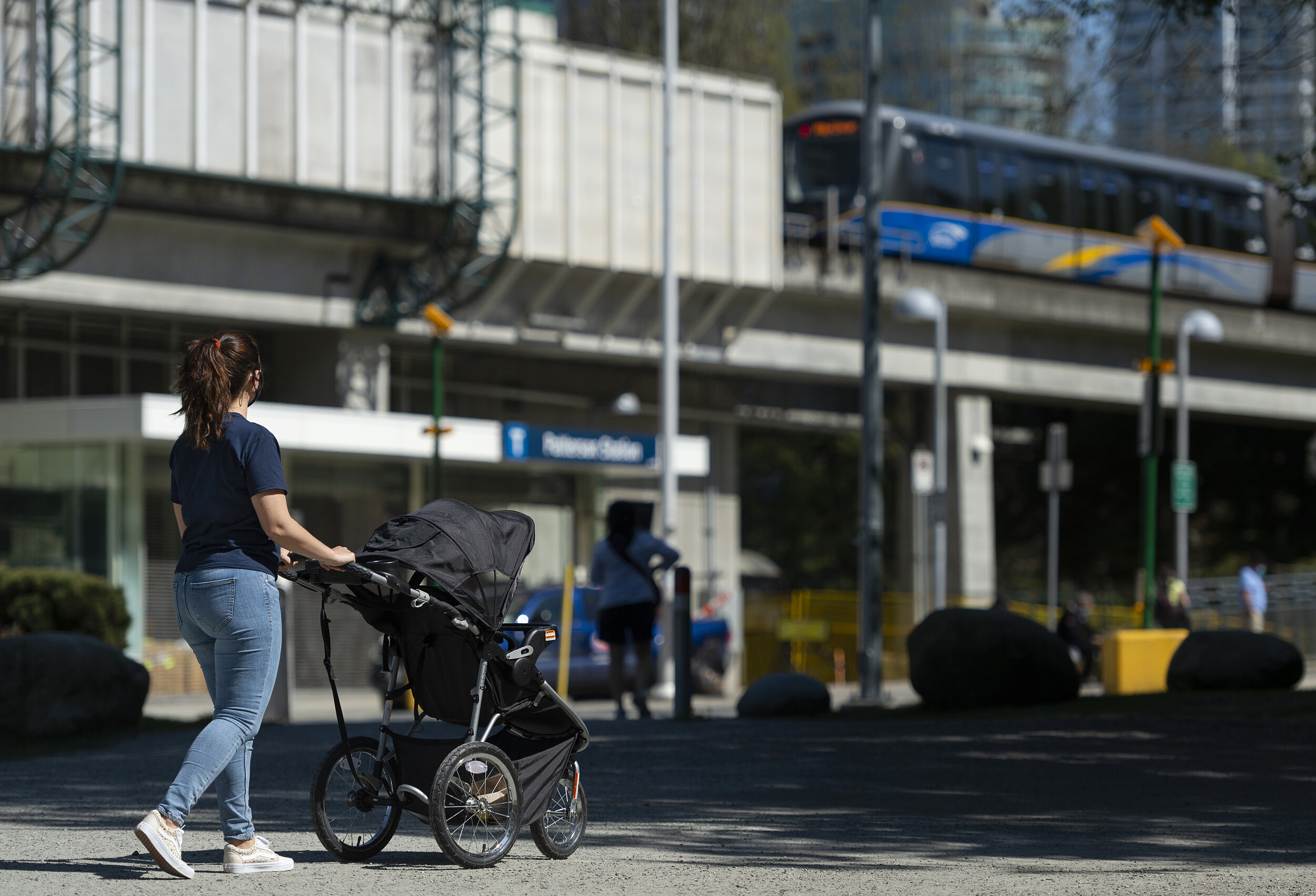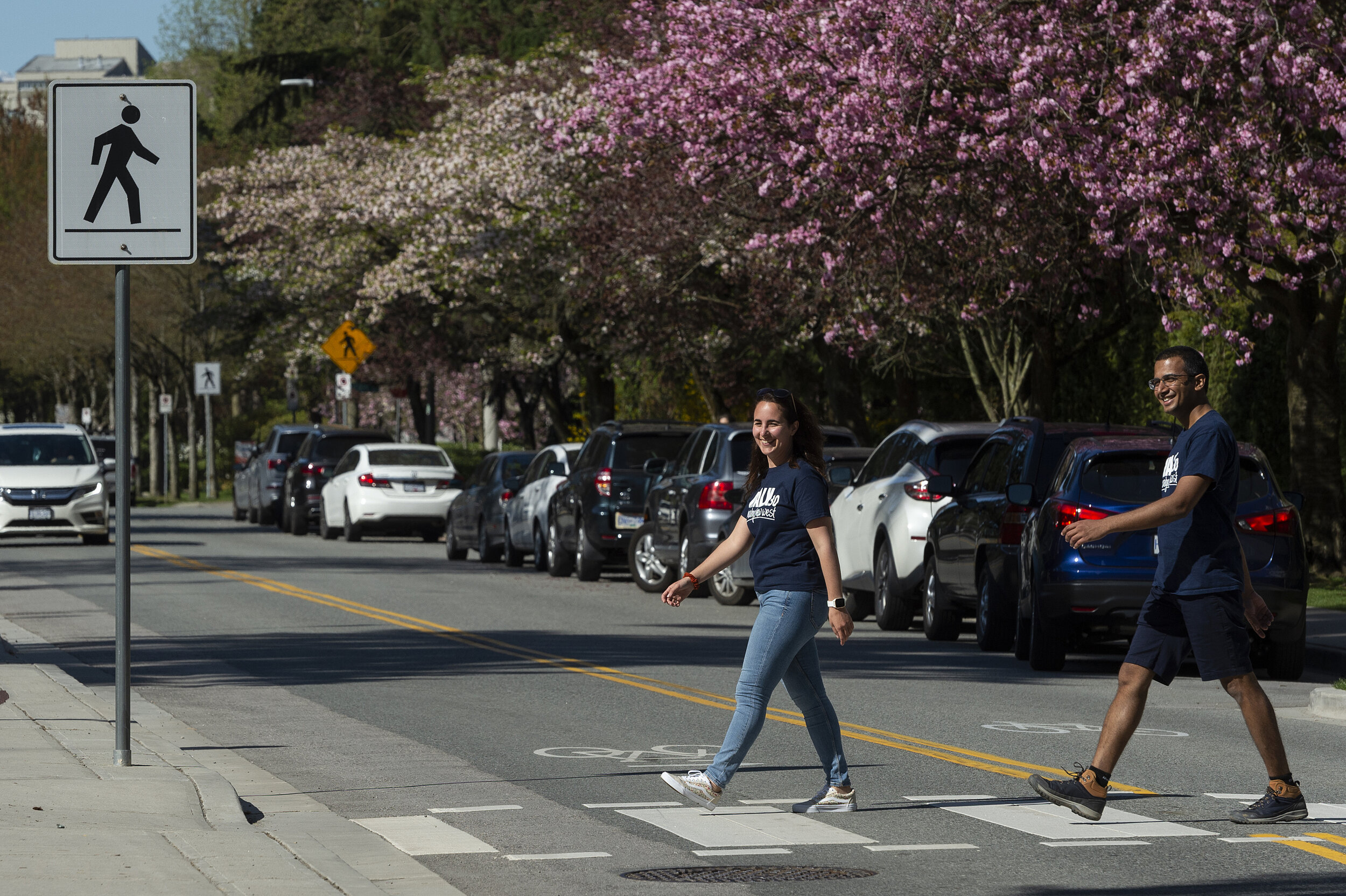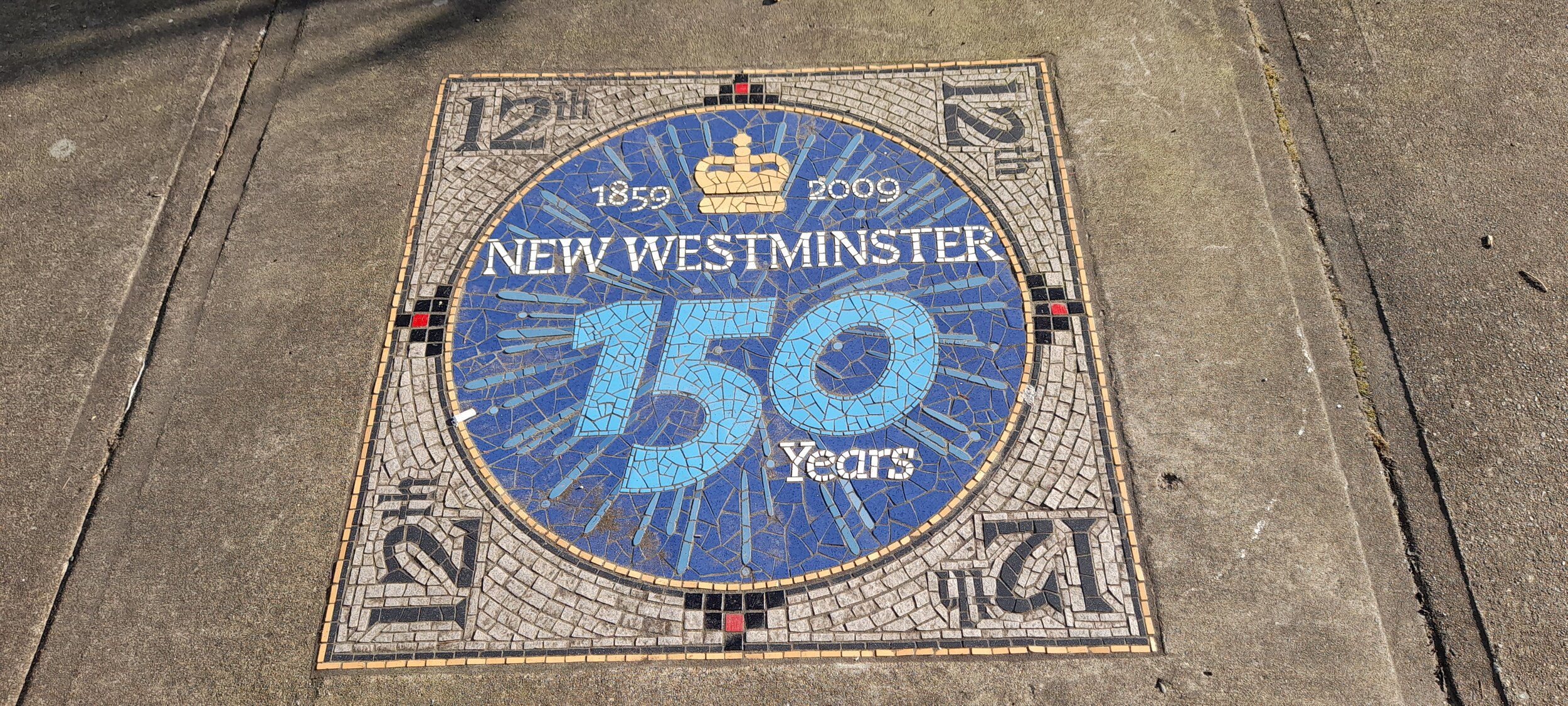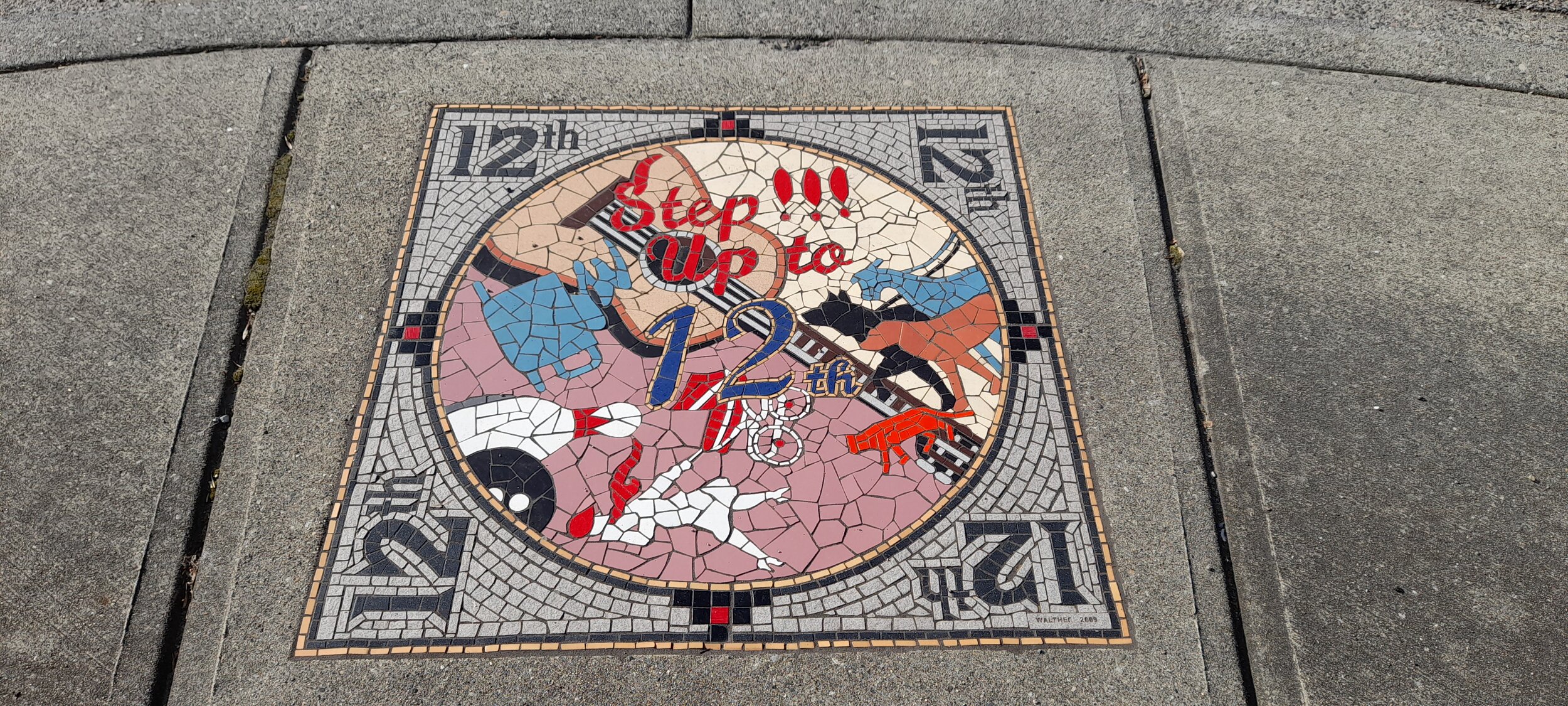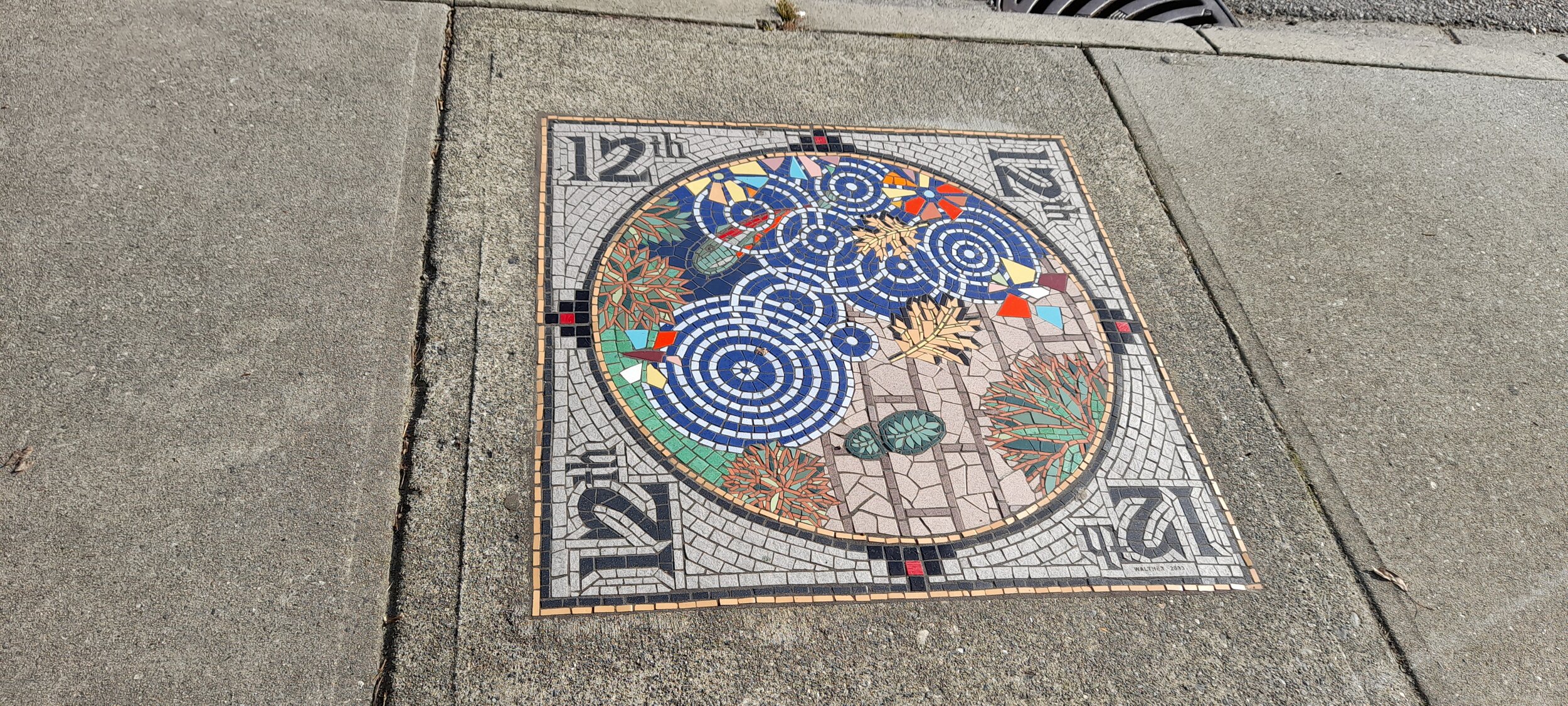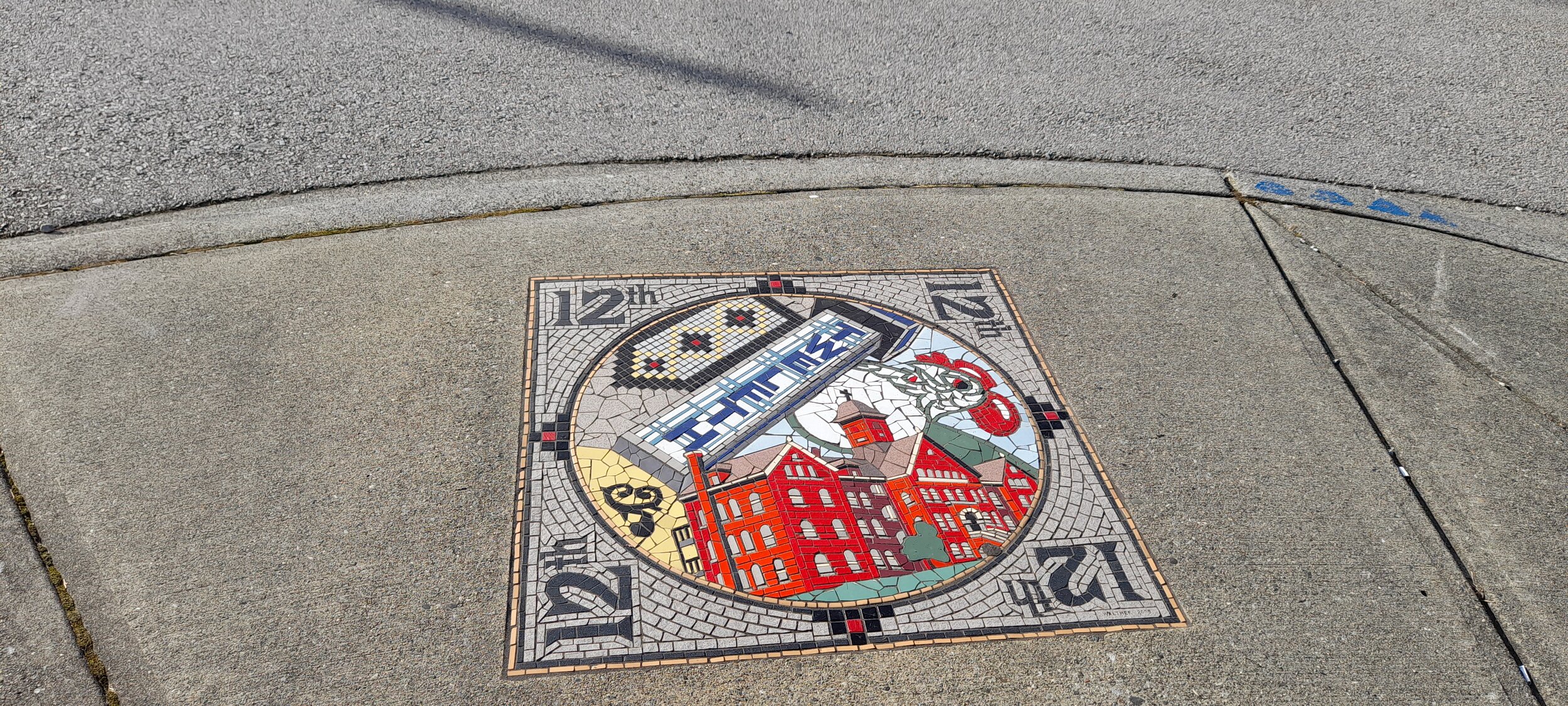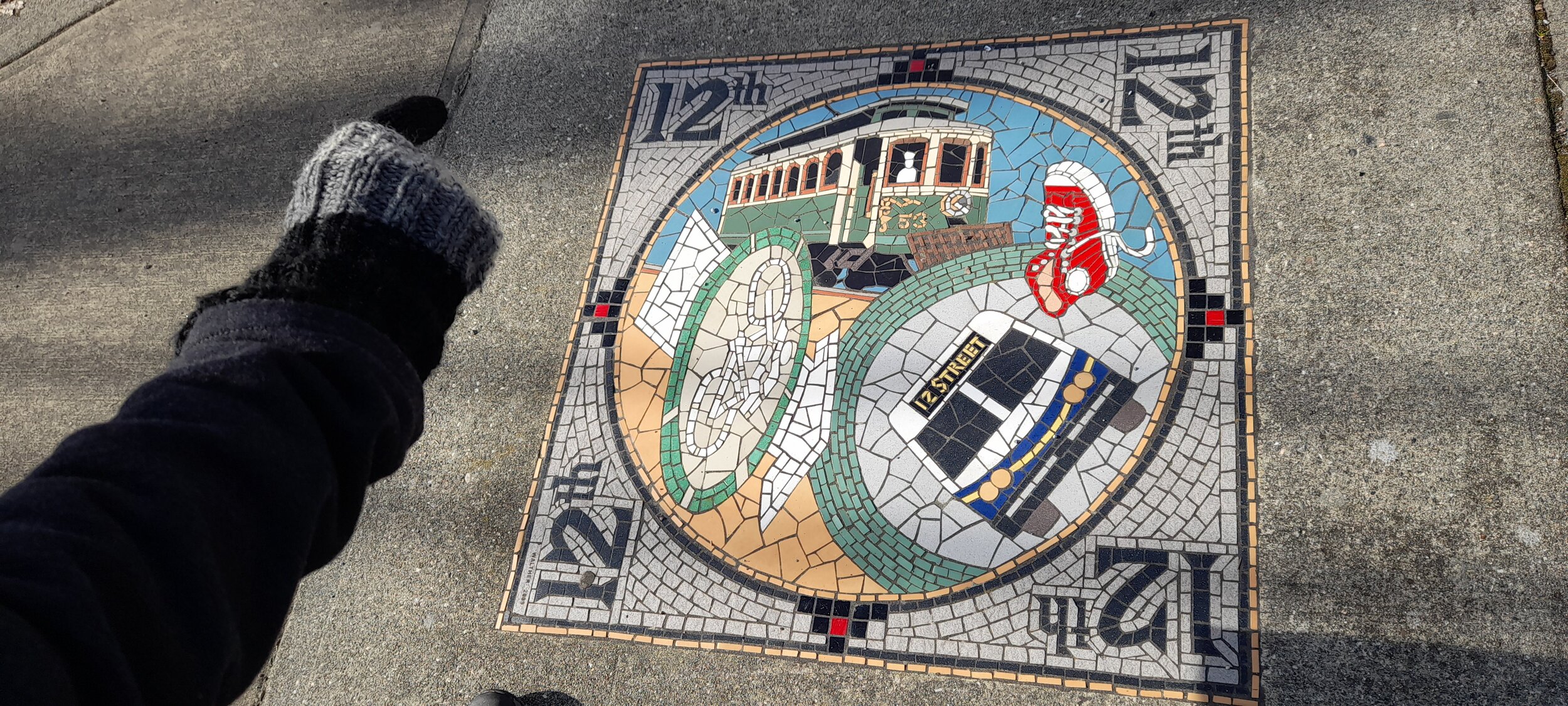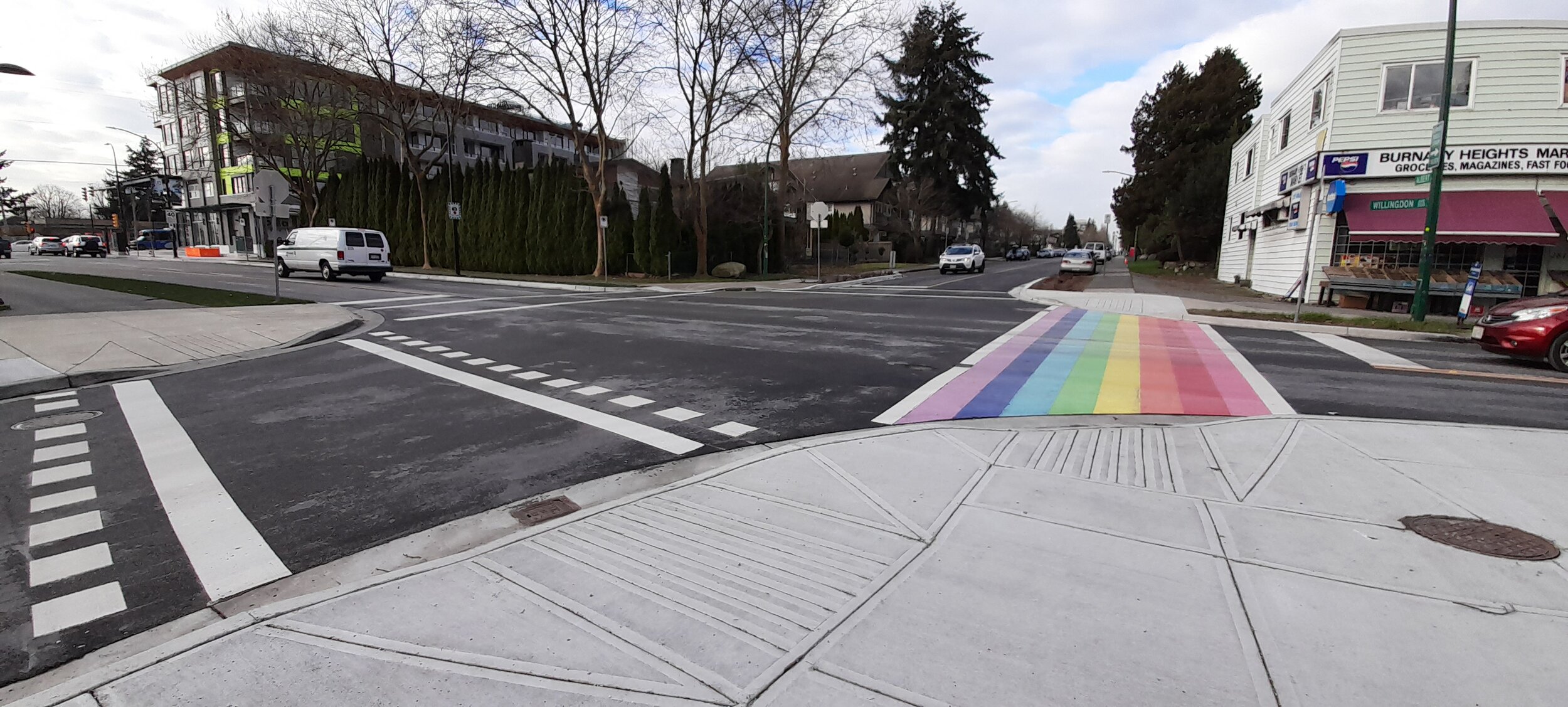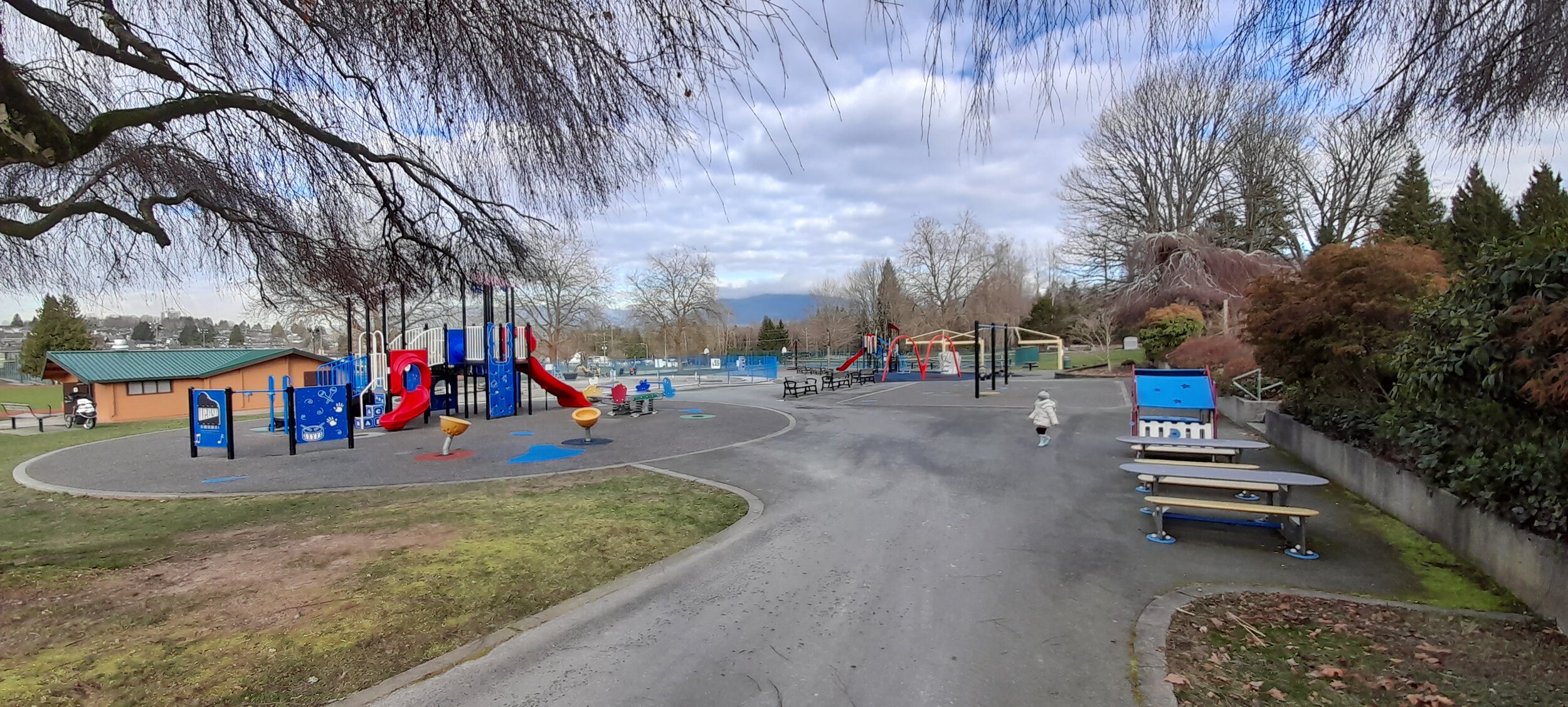
STORIES & NEWS
Walk30 Week 1 Theme: Active Transportation
More and more people are choosing active transportation as an affordable, environmentally sustainable, and healthy way to get to their destinations without a car! So what is active transportation, anyway?
Walk30 Week 1 Theme: Active Transportation — the healthiest and most affordable way to get around!
The annual Walk30 Challenge between Burnaby and New West kicks off April 11! Every week during the five-week Challenge has a theme, meant to educate and inspire participants to walk more and keep going!
Did you know the BC government aims to double the percentage of trips taken by active transportation by 2030? More and more people are choosing active transportation as an affordable, environmentally sustainable, and healthy way to get to their destinations without a car! So what is active transportation, anyway?
Active transportation is carbon neutral transportation powered by you! Some examples of ways you might be using active transportation include:
Walking to school
Cycling to work
Using your wheelchair to get to the store
Jogging around the block
Skiing, snowboarding, or snow-shoeing
Going for a run
Skateboarding in the park
Rollerblading on the seawall
If you travel using your own power without a car, that’s active transportation!
Active transportation also includes getting around with the help of a device that gives you a boost, such as:
Mobility aids (ex. wheelchairs and walkers)
Electric bikes (e-bikes)
Electric kick scooters (e-scooters)
Walking and rolling (using a mobility aid with wheels) is fantastic for our mental and physical health, and great for the environment!
In North American urban planning, the trend for decades has been to build cities for and around cars. Building cities for cars negates the fact that humans love to be outdoors, and that it’s good for us too! Building highways instead of slow streets, suburban sprawl, and the way we zone cities can all lead to car-dependence in our society and increased pollution. It can be easy to forget our instincts to move and get outside when we are driving everywhere.
Consider a vacation you may have had in Europe. Did you notice how many car-free spaces you walked through? Maybe you also noticed that people love to cycle not only for leisure, but to get to work. Perhaps you were impressed by how abundant the transit options were, or how many tourists you saw walking casually down the street enjoying the scenery, or how kids walked and cycled together to school. This is because European cities are older and were built before the advent of the automobile, leaving many public plazas, small narrow streets, and spaces for people, not cars!
Wide, open pedestrian space in Paris. Walking while shopping and enjoying the beautiful architecture is a favourite activity of tourists and locals alike!
It can be surprising how our transportation modes shift when we travel yet we come back to our car-centric lives when we’re back home. Many of us love wandering about on foot when on holiday while taking in all the sights and sounds of the city, exploring hidden gems, and visiting quaint shops and local businesses, so why not do it here? We can do the same on our own streets at home! We can miss out on so many wonderful things in our city when we drive. Walking, rolling, or cycling, even if it’s along your regular driving route, allows you to notice things you’ve never seen before. Perhaps you’ll stop to chat with a neighbour you haven’t seen in a while, enjoy the lovely spring flowers, or meet a cute four-legged friend along the way!
A beautiful garden near the seawall at Granville Island, a wonderful place to walk or cycle to enjoy the views in the spring and summer.
You may have heard of the “15-minute city” concept. The idea is simple: plan and build our communities in a way that our daily needs can be covered by no more than a 15-minute walk, bike ride, or by using public transit. The major advantage of 15-minute cities is that they offer convenience and improved quality of life, and reduced social isolation. This concept became more popular and gained traction in cities during the COVID-19 pandemic. With more people working from home and trying to reduce their travel distance, the need for shopping and necessities to be close to home became more important to many. More city dwellers began to walk outdoors and cycle more because it was one of the safest and healthiest things you could do! Cities across the globe began developing outdoor patio pilot programs, implementing slow street and pop-up plazas, and creating temporary bike lanes and parklets.
People enjoying an outdoor plaza during the pandemic.
Metro Vancouver municipalities have been working towards improving active transportation options and integrating the 15-minute city concept into their long-term plans, recognizing the benefits of walking, rolling, and cycling in matters of public health and wellness. Burnaby’s latest transportation plan seeks to create opportunities for people to participate in the life of the city through the design of streets for people, and aims to have ¾ of all trips be by public transit and active transportation in the next 30 years! The City of New Westminster’s Uptown Active Transportation Improvements plan includes updates to the Rotary Crosstown Greenway and a new cycling connection to New Westminster Secondary School to improve and increase active transportation options in the city and give us more ways to safely get around without a car!
During the 2022 Burnaby|New West Walk30 Challenge, we challenge you to walk more personal wellness, to strengthen your connections to your community, and to rethink how you get around. Try approaching every walk like it’s an adventure and you’re on holiday exploring a new place for the first time! Make a mental note of all the new things you discover, the people (and animals!) you meet along the way, the nature you enjoy, and how you feel after a refreshing walk! Whether it’s your first time participating or if you’re a well-seasoned walker, the Walk30 Challenge encourages us to think outside the box of mobility and make long-lasting changes for our health and environment.
Now trending: #WALKING
We read that we stopped walking for commuting but we have walked in a more pleasurable way. We have been discovering our neighbourhoods and we have claimed the streets for our on-foot trips.
“Be calm. Be kind. Be safe.” - Dr. Bonnie Henry
Walking is one of the most effective remedies and a preventive measure that we all may access at no cost, and improve our health.
It has been backed by so many studies. They show that walking helps us overcome some of the most difficult moments, and in these pandemic times, we all have been living it together.
If you haven’t heard about Twitter yet, let us define it in quite a clichéd way: it is an online platform where people go to express how they feel, what is going on, and in your own style (meaning, don’t be surprised if you find messages to be impolite).
Twitter like many other social media platforms, isn’t real life, but these are places where people go to destress. Sharing your problems, many times helps. Many go on these platforms to read about what others (influencers included) think and sometimes to fight for a point of view. Twitter’s known to be quite the opinion driven, ‘intending to uphold facts’ kind of a platform, and you will be pleased to find out how positively walking has been talked about, especially since COVID-19’s lockdowns.
So, we run a simple search on Twitter with the terms “walk”, and “fresh air” during this one year that definitely set a milestone in our lives. We got thousands of results.
There are few topics that are nicer to read about than how walking encourages everyone to keep going. Oh, and the pictures are so beautiful and encouraging!
We conclude that this reflects how we have been feeling, what we have been using for dealing with the lockdown, the isolation, the staying distanced…we have been going out and walking. We have been starving for fresh air, for a serendipity moment, for hope.
We read that we stopped walking for commuting but we have walked for leisure and wellness. We have been discovering our localities better and ‘claimed’ streets for just trips on-foot.
We found out that one of the benefits of working from home is that we are working from anywhere. No one is stopping us from walking up to a park, setting up our computer, and having a productive hour or two out there. If you think this would be waste of time, think twice: you walked, stretched your legs, had time away from your screen, got out of the house with a purpose, and probably did more work than you would just be sitting at the office staring at your screen.
Some people have switched long sitting meetings for a walking meeting (weather permitting of course). We substituted eating lunch at our desks for a quick take-out run from a new local eatery place every time.
What most people agree to is that we need time away from the screen, even as you are reading this right now, well, on a screen. Moving most of our social interactions to video-conferences and webinars has stressed more than ever on the need to go out and ‘disconnect"‘. And what a better way than going for a short stroll around the neighborhood.
Since gyms and recreation spaces are at limited capacity, people have switched indoor workout for yoga in the park, or a couple of laps around the block instead of the once-beloved treadmill.
Walking helps your mind think clearly and that’s how you find yourself getting the best ideas while walking! Walking with a purpose is highly satisfying. Don’t think twice. Turn off this device and step outside.
Happy Walking!
This blog post is written by BEST’s Isabel Garcia. #walkability
Walking for a healthier you and the planet
Some love walking on rainy days; some, prefer feeling the sun rays on their skin. How are environmental effects affecting your walking?
One of the best ‘ice-breaker’ topics to start a conversation; the weather!
It is not a trivial conversation though. Weather surely influences our daily routine and mood. And this is universally accepted by most of us (if not all). Some people just love walking on rainy days. While others prefer the touch of the sun’s rays on their face every time they walk. It’s true that sunny weather benefits most; get activated, cheerful, energized and of course, the prescribed dose of Vitamin D!
Did you know?! Your skin produces Vitamin D when exposed to sunlight!
From early morning smog prevailing over cities to smoke inside our homes, air pollution poses a major threat to personal health and climate. The combined impacts of ambient (outdoor) and household air pollution cause about 7 million premature deaths every year, largely as a result of increased mortality from the related health disorders.
The industrial revolution was indeed a milestone on the way that we lead our lives nowadays, but still it has been the trigger of seriously damaging effects to our environment, which translates into our health. The most neglected aspect (believe it or not) is air pollution.
Canada ranks 6th in countries with less concentration of particle matter according to WHO. Even the size and its vast natural landscape help, we should try to even lower it. Transportation is the major source of pollutants in the atmosphere. Unless we talk about cleaner ways to transport ourselves. Walking is one of the best ways, of course!
The pollution is not something that only affects our respiratory system, there are other elements that can be harmful to the environment. Traffic noise in cities can reach alarming levels presenting a grave danger to the residents. Combustion engines, rail tracks, sirens, honks build up the decibels causing wellness issues for people and our wildlife. These sounds are proven to cause stress and high blood pressure. Noise from ships and human activities in the ocean is harmful to whales and dolphins that depend on echolocation to survive.
We need to rethink how we move and how we interact with the planet to maintain sustainable growth for us and generations to come. Do you know what your personal carbon footprint is? How much carbon you're emitting while performing those tiny, quick errand runs? If you’re interested in tracking those parameters, technology helps. Sign up to be a beta tester of the Lighter Footprint App and find out soon: https://www.lighterfootprint.org/testing
Catherine McKenna, Canada’s Minister of Infrastructure and Communities said on March 12th “More paths for cycling, walking, (...) means good jobs and a healthier and cleaner Canada for All.”
Parks and natural environments are idyllic places to go for a walk or a hike, of course, and we are aware that we live in cities. This doesn’t mean that the system cannot integrate parks and natural environments. We are fortunate that Metro Vancouver sits in this amazing natural environment and our public transport system allows us to not rely on a private vehicle to access some of these walking havens.
Best of all, did you know that you can go to these parks for more than just a walk? Both New Westminster and Burnaby have their farmer’s markets during the summer months located in similar parks.
The New West farmer’s market of 2021 kicked-off on April 1st at Tipperary Park where every weekend, you can find a good array of farm-fresh products and local goods. In Burnaby, it happens on Saturdays in Deer Lake. Tiny little tit-bit on the side.
Whatever the weather, walking can be made fun, interesting and part of your everyday routine. Try it. It’s the best way to explore your city.
Happy Walking!
This blog post is written by BEST’s Isabel Garcia. #walkability
Walking gets you from A to B
Walking with a purpose saves you time during the day and makes you feel with a higher level of accomplishment than circling a race track. Being able to step outside and go to the market for your groceries, or realize that school is just a couple of blocks away is only one of the benefits of pursuing this urban trend.
By now, you probably have heard about the 15-minute city and how Paris is championing this concept. (There are also 5-min, 20-min models out there, all basically hinting at the same thing) If this is new for you, let us tell you a little bit about it. A simple idea; plan and build our communities in the form that our daily needs can be covered in no more than a 15-minute walk, bike ride, or by using public transit. In fact, by any mode but a private car. The major advantage of 15-minute city neighborhoods is that they offer convenience and quality of life, but not isolation. This trend in urban design is not something that should surprise us. The cities, as we know them today, in North America are not more than 60-70 years old. Before that, they were communities where walking was as prioritized as an essential mode of transport.
Walking with a purpose saves you time during the day and makes you feel a higher level of accomplishment than just going around a track. Being able to step outside and go to the market for your groceries, or realize that school is just a couple of blocks away is only one of the benefits of pursuing this urban trend.
It’s surprising to notice how our travel modes shift when we travel (mostly for leisure) yet we come back to our car-centric lives when we’re back home. We usually love traveling to Europe and wander around its little streets discovering shops and businesses. We could do the same on our own streets. This is exciting but requires bold leadership and a commitment to support active transportation.
We realize that a 2-week European vacation is not as stressful as having to rush to school, to the doctor, or a playdate. Although, planning accordingly and giving yourself enough time to walk your daily trips will shift the way you interact with the city.
Walking is not an exclusionary way to navigate across your region. The transit system in Metro Vancouver is a reliable option for going a little bit further, or when the hill is too steep, or even when you load your shopping cart more than usual.
Both the City of New Westminster and the City of Burnaby know it is time to rethink and review their transportation options to direct us to a more sustainable and equitable society. An example would be the Agnes Street Greenway in the City of New Westminster or the Transportation Plan Update that the City of Burnaby is undergoing.
Counting steps instead of mileage seems like a much more fun activity to do. Still not convinced? When you walk to the places, you don’t need to worry about if there is parking or how much it costs or taking a detour just to fill up on gas!
Being aware that life circumstances vary, we are positive that as an able adult we are capable to do up to 2-3 km walk easily and comfortably. The topography is something that we cannot control, but searching for alternate routes will step up your transportation game!
Happy Walking!
This blog post is written by BEST’s Isabel Garcia. #walkability
Isabel Garcia’s Work with Women4Climate
We are proud to share about BEST’s own Isabel Garcia and her involvement in the Women4Climate global mentorship program. Isabel is an avid advocate for walking and public transit as an accessible, healthy means of getting around without relying on personal automobile ownership.
Women around the world are championing new ideas for sustainable cities, healthy communities, and active transportation. The Women4Climate global mentorship program is set on helping grow and support this new generation of change-makers.
Women4Climate is an initiative launched by C40 Cities to empower and inspire women to lead the charge against climate change. Through the mentorship program, emerging leaders are connected with local mayors, politicians, and women on the forefront of climate activism around the world. Mentees are supported through collaboration, creativity, and community to work towards measurable progress in sustainable development and thought leadership. With 16 cities already participating in the mentorship program, including the Canadian cities of Toronto, Vancouver, and Montreal, the power of shared knowledge and experiences is rippling change and progress through major cities across the globe.
We are proud to share about BEST’s own Isabel Garcia and her involvement in the Women4Climate global mentorship program. Isabel is an avid advocate for walking and public transit as an accessible, healthy means of getting around without relying on personal automobile ownership. With a background in Sustainable Transportation and Mobility Management, Isabel is well equipped to speak about safe and comfortable traveler experiences, particularly as someone who personally moves through Vancouver on foot with a toddler and stroller.
Isabel is the Manager of the Living Streets Program at BEST. Living Streets seeks to encourage walking as a means of transportation and health to build vibrant, active communities and accessible transportation infrastructure. With the changes that COVID-19 brought to city life and mobility, active transportation in outdoor settings has become even more crucial in keeping communities safe and strong. The Walk30 Challenge running from May 10 to June 13 is just one way Living Streets is encouraging people to get outdoors and get moving. Isabel’s involvement with the W4C program promises to move Living Streets forward through strategic storytelling and valuable experience from her mentor, Marion Town.
Marion is the Director of Climate and Environment with the Vancouver Airport Authority, working closely with the YVR’s Board of Directors and Executive Team to minimize negative environmental impacts at YVR and encourage sustainability and high standards. With a deep history of government work at all levels as well as a professional background in planning, Marion’s guidance and mentorship are helping Isabel develop the Living Streets Program to its highest potential and leverage communications to amplify the program’s reach.
Women are changing the world. We are excited to see this leadership and growth within our own team at BEST and thrilled to see the W4C mentorship program transforming and empowering future leaders in all cities and communities. Hats off to you, Isabel!
This blog post is written by BEST’s Molly Peters.
Walking for All. Walking with the senses.
Walking is not only being able to put one foot in front of the other, and repeat. Walking is an occurrence that is highly influenced by the surroundings.
Walking next to a lavender path, or a wall with jasmine flowers isn’t just a soothing sight for a stroll. Ever heard of aromatherapy? Aromatic plants are known for their healing and calming effects, however we often forget how effectively such a pleasant sensory experience helps kindle our memory - to locate and to identify a place.
Many of us are fortunate to be able to walk pretty instinctively. But walking is not only being able to put one foot in front of the other and repeat. Walking is an occurrence that is highly influenced by the surroundings. Everyday happenings such as traffic noises, kids on a playground, or the melody of a busker impact how we feel emotionally. A flight of stairs might ruin my walking path, and a sidewalk full of tree roots will make walking a tad bit more attentive. Walking on grass, a glossy laminate, wood board, or on cobbled streets bears different connotations. For some, it’s the city skyline, whereas for others it’s the mountains or vintage-style houses or a bed of colorful flowers when it comes to triggers of a pleasant walking experience.
But once the sun is set, darkness falls over even on our most desired walking havens. Living in Metro Vancouver, we need to be aware of the fluctuating weather (for the most part of the year) which gives us a mix of bright sunny days (longer days during summer) and overcast days (shorter days in winter). Light influences us in a way that we feel safer and more welcome. We are attracted to festive lights, an evening along a busy street with patios, and local shops with striking window displays. We seem to need artificial lighting as much as we do the natural one.
Traffic engineers introduced light posts on roads and streets. And, at intersections, we have traffic lights that help organize vehicle traffic. Many of these intersections are equipped with begging buttons. These stop traffic allowing pedestrians a couple of extra seconds and some are fitted with voice messaging and/or beeping sounds. Blinking lights, speaker countdowns, or motion sensors are some patterns that illustrate the diversity of road users and necessities to every person.
No matter how you may say it, walk, stroll, hike, caminar, pasear, andar, टहल लो, ਤੁਰਨਾ, camminare, coiseachd, ходить, 步行, wandelen, lakad, 산책, marche, Περπατήστε, gehen, راه رفتن, gå, or 歩く, we invite you to walk more and we wish you to stay motivated and keep at it.
Happy Walking!
This blog post is written by BEST’s Isabel Garcia. #walkability
Walk for your body & mind. Get out, get walking!
We are all aware of how these months have influenced our lives, but if there must be some positive aspect and some hope in our every day, it is that we reassured ourselves that being able to go for a walk is like a lifeline. Walking might be a light physical activity but it encompasses a huge mental exercise.
For over a year, we have been under a Provincial Health Order that prohibits us from socializing in person, exercising, and performing our daily activities in ways we were accustomed to. Nevertheless, going for a walk or a hike is an activity that remains open and termed safe as per the order. We have been encouraged to walk while staying safely apart just because of the innumerable benefits attached to walking.
Suddenly, working and attending school from home has become a routine in many households. We switched the commuting, the walk for a coffee, or the simple changing classes into just moving in and out of the many zoom meetings. Call it unintended, but we’ve pressed pause on the usual reasons to take casual strolls and all the socio-personal benefits that are derived from them.
We are all aware of how these times have influenced our lives, but if there must be some positive aspect to it, then it is that we’ve reassured ourselves that being able to go for a walk is like a lifeline. Walking might be a light physical activity but it comes with a huge mental exercise bonus!
This isn’t something new or an unexpected habit change; this has been well known from ancient Greek times. The great philosopher Aristotle’s students were required to walk along during class as he taught them. This walk up and down behaviour is called peripatetic, from the Greek word περιπατητικός (peripatētikós), which means, ‘of walking’.
Walking is great for increasing blood circulation, which also means that it helps to relieve stress from our brains. This boosts creativity, problem-solving, improves our mood making us feel happier, and allows for better concentration. The physical aspect of it builds and maintains a healthy body and promotes well-being and decreases feelings of anxiety and depression. A particular relevant remark is if you practice mindful walking. This too isn’t a novel idea. For generations and in different cultures, the practice of pilgrimages, religious walks, and meditation existed. When you are walking, focusing on your steps, breathing, or simply noticing your surroundings, and how it makes you feel, you are nurturing your mental health.
You can imagine such a walk to be very relaxing. However, it will work as an energizer at the same time. Just as you hit that point in your day that all you want to do is take a nap, you should try going for a walk instead. You will probably start slow, even grumpy, but as the walk progresses (especially in a nice environment like a park or a quiet neighbourhood street), you will feel how your energy levels start going up again.
There, now you have all that you need to know about walking and that it does work wonders for your physical and mental health. Congratulations! Happens to be that today is not only our Walk30 start day but also the day on which the World Health Organization (WHO) formally instituted Move for Health Day.
Happy walking!
This blog post is written by BEST’s Isabel Garcia. #walkability
Twelfth St. - New West’s 150yr old heritage
Today’s walk is about being local and staying close to home. We were very fortunate to have Mary Wilson guide and show us the hidden gems of this part of New Westminster.
This week we wanted to highlight local businesses and walking around your neighbourhood.
The route takes you through one of the commercial yet beautiful streets in New Westminster. It starts at the Edmonds station, from where we took the 112 bus route. We covered another area near Edmonds station in our last week’s walk.
Starting at the outer edge, where Kingsway culminates into Twelfth st., you have a sign post welcoming you to the City of New Westminster. Did you miss the sign? Never mind, take a look at the crosswalk. Every city has a unique style to it. Could you tell?
The Upper Twelfth Street is defined in the New Westminster Community Plan as one of New West’s Great Streets. It’s an important local corridor that connects the West End and Moody Park neighbourhoods to Brow of the Hill and Downtown, as well as connecting the city to Burnaby. This corridor has also played an important role in New Westminster’s history and remains home to several buildings designed in the Art Deco style. Twelfth Street supports small-scale neighbourhood retail and commercial businesses along the corridor, providing services to the surrounding neighbourhoods.
We were very fortunate to have Mary Wilson guide and show us the hidden gems of this part of New Westminster. There is some nostalgia about the street from its best days around the ‘40s.
Mary’s concern is that no one walks around the 12th and the area might be forgotten. Nevertheless, she stops at the corner store's facade “Isn’t this beautiful?” she asks pointing at the beautiful stores: the tiles and the flowers growing whimsically on the facades. Every store is different, some even feature murals. “I like it. I like the colours” she says.


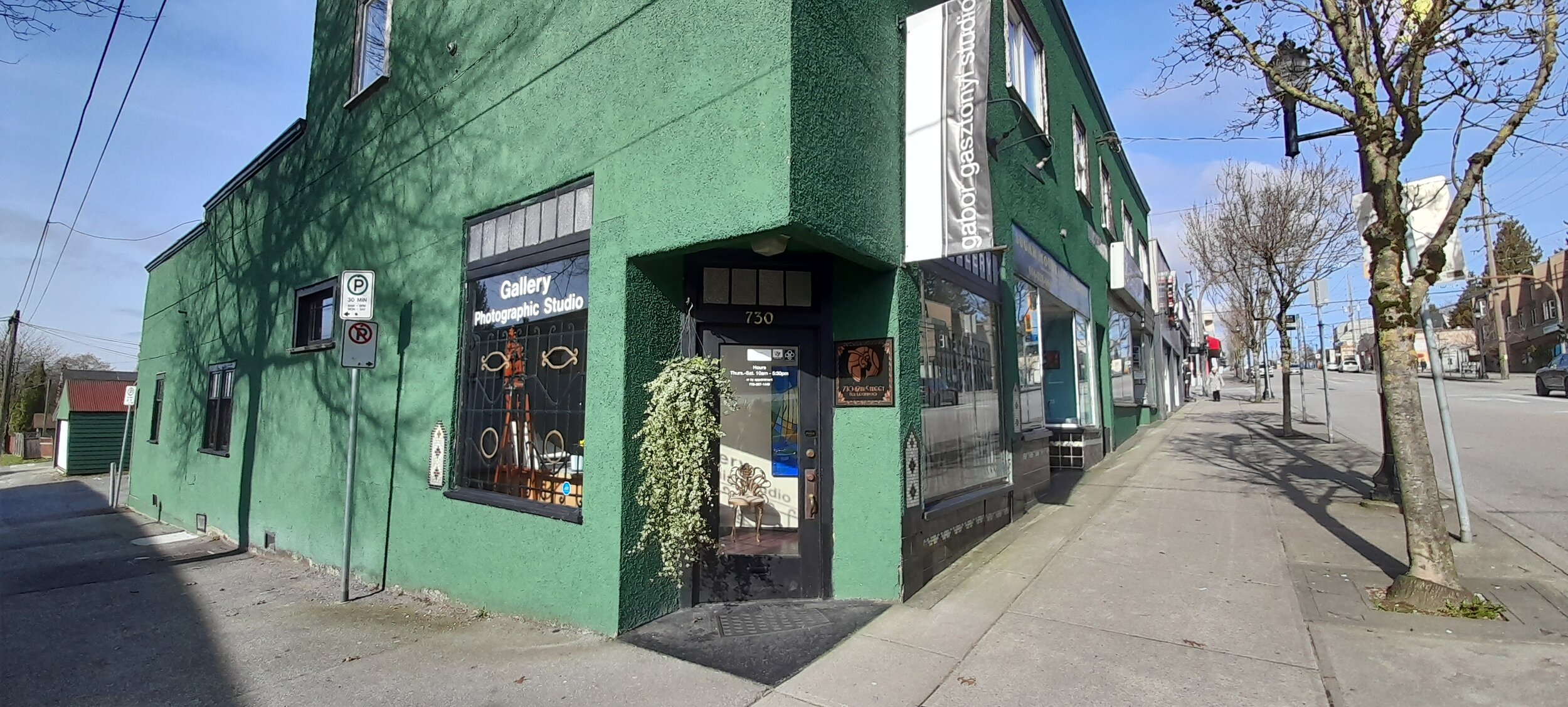
She also showed us the first mosaics in the City, a community project that she initiated in cooperation with the Parks & Recreation team and the city’s Engineering department. The mosaics were made to commemorate 150 years of the 12th. Each of them tells a story about the block they are in. They are only visible if you walk along the street.
You will be able to learn more by signing up to Jane's Walk. The artful mosaics reflect the character and culture of the street.
The street is a favorite among film production teams for its unique and picturesque look. The area is well served with salons, barbershops, a laundry place, fitness centers. There are also a couple of churches for the residents in the area.
The City added a public parklet last year as part of the COVID-19 recovery strategy.
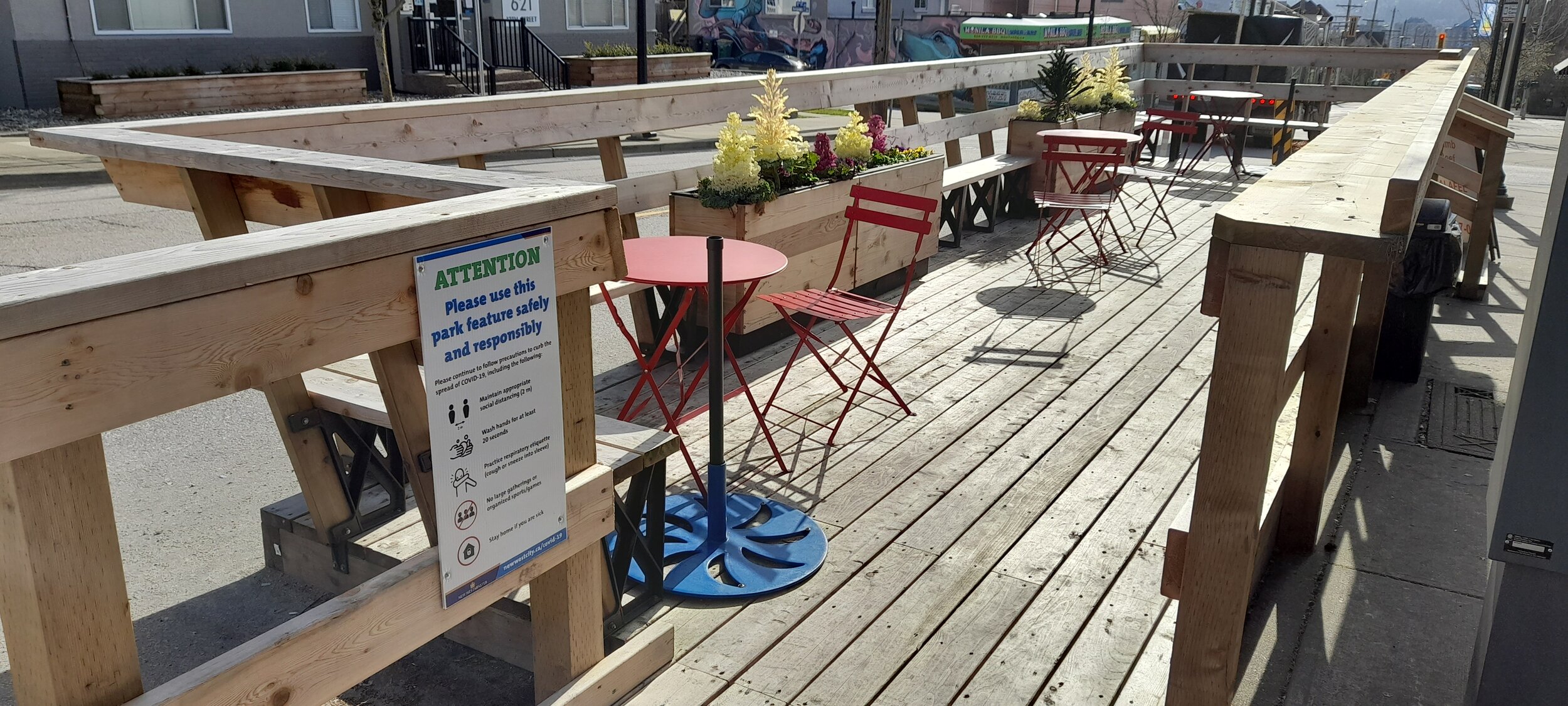
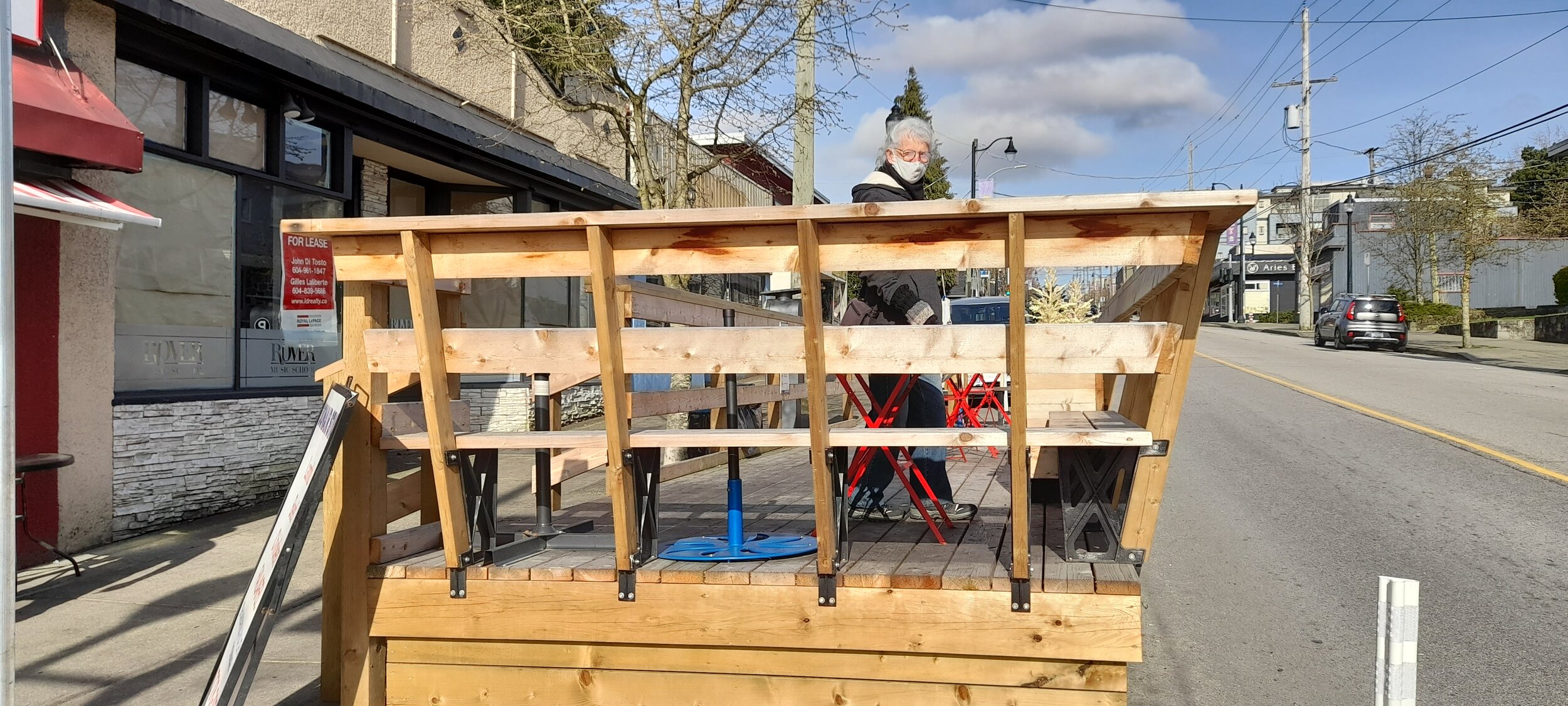
We visited our partners i.e. small businesses that serve the neighbourhood nurturing people’s minds and palates. Visit Kamini’s Corner Café for homestyle food, Paradise Donair with a patio dining area, and Renaissance Books with shelves fully stacked with interesting titles. By registering on Walk30 you could win one of the $50 gift cards to spend on one of these establishments.
While we were walking down the street, we met Con. Chuck Puchmayr. What says more local than running into your city officials!
We then turned on the 4th into the Historic Brow of the Hill. “It is now an eclectic mix of rental apartments, corner stores, places of worship, heritage homes, and light industrial buildings. While much has changed, the neighbourhood still prides itself on its diversity and inclusiveness heritage.”
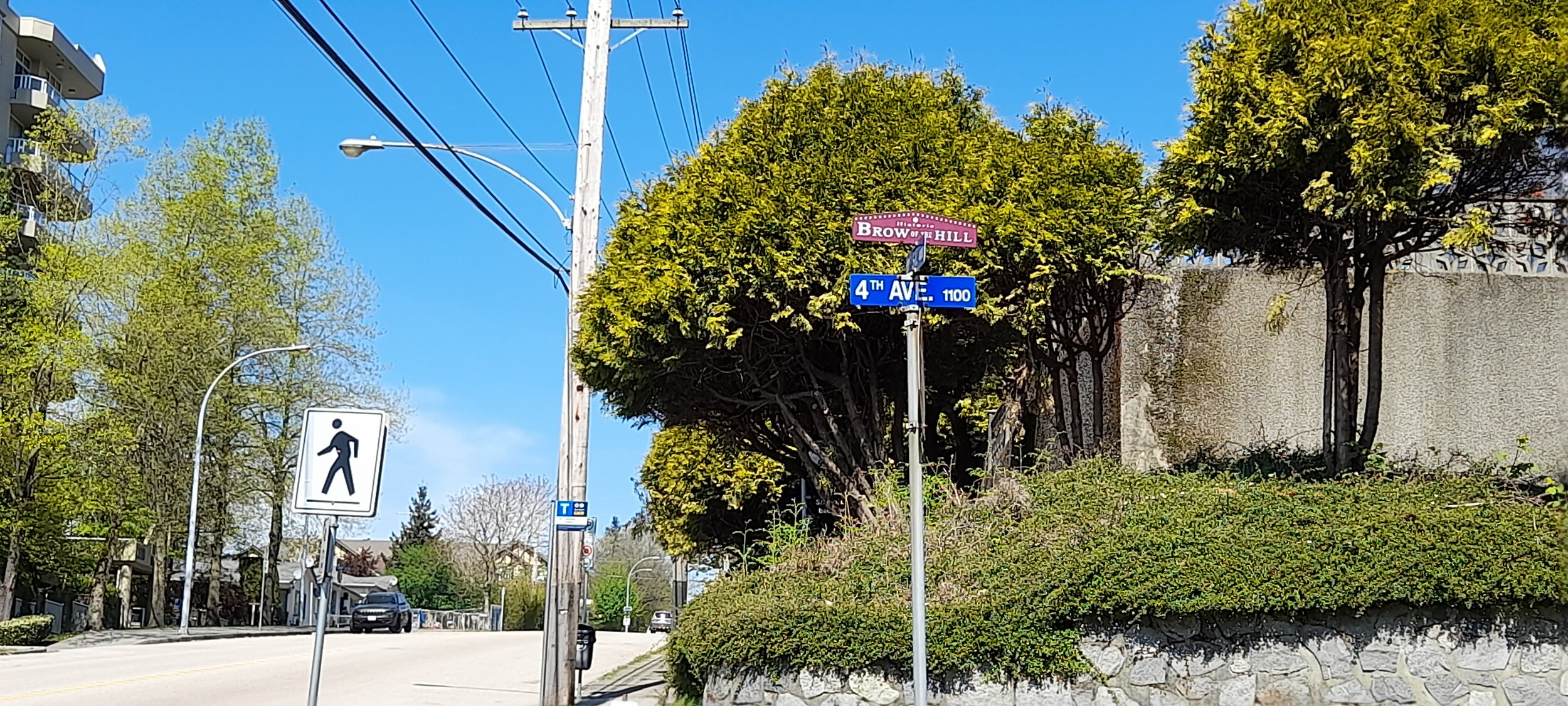
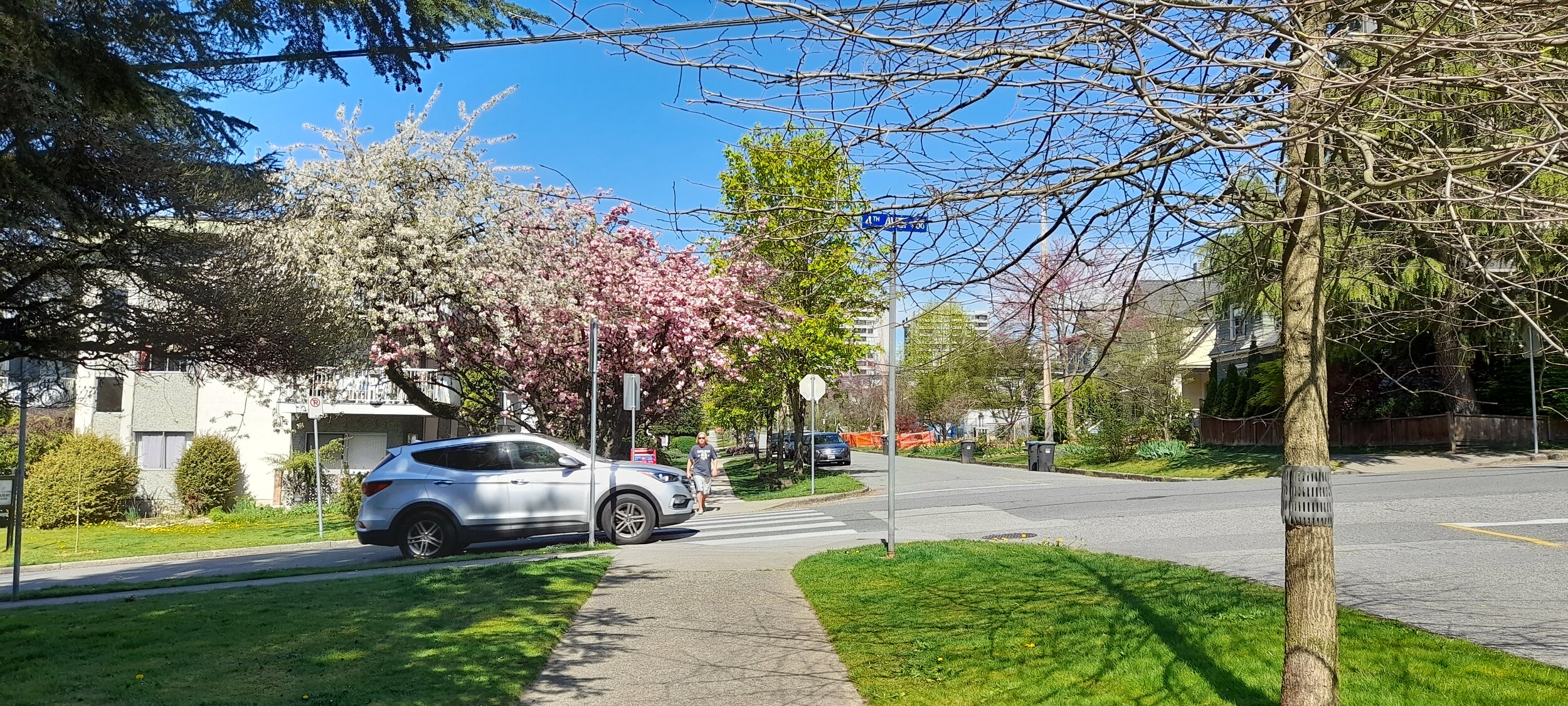
Shortly we followed down along the 9th and walked part of what was the Cool Streets pilot project last year. What a pretty sight with all flowers blooming!
We passed the Fraser River Middle School and had some rest at Simcoe Park, a city-center access-to-nature point.
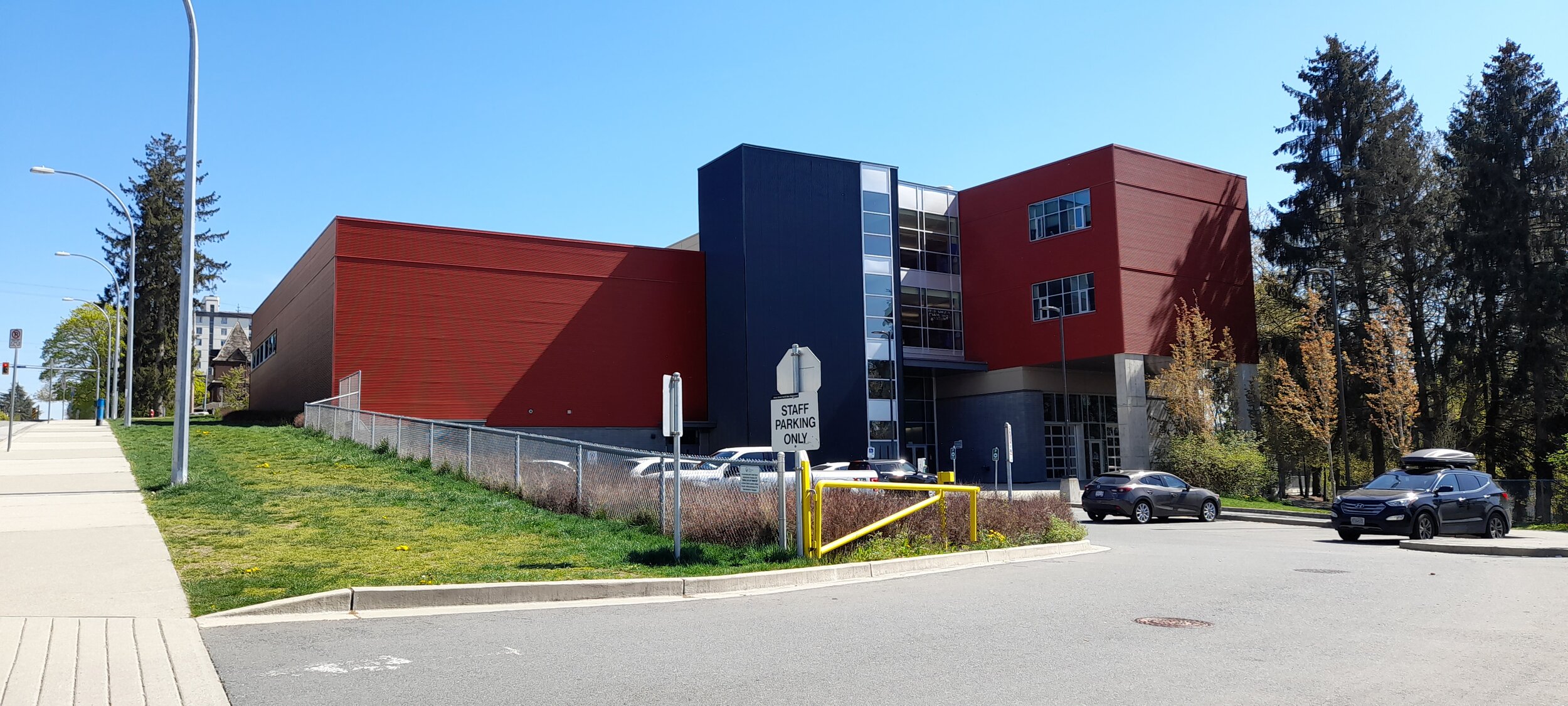
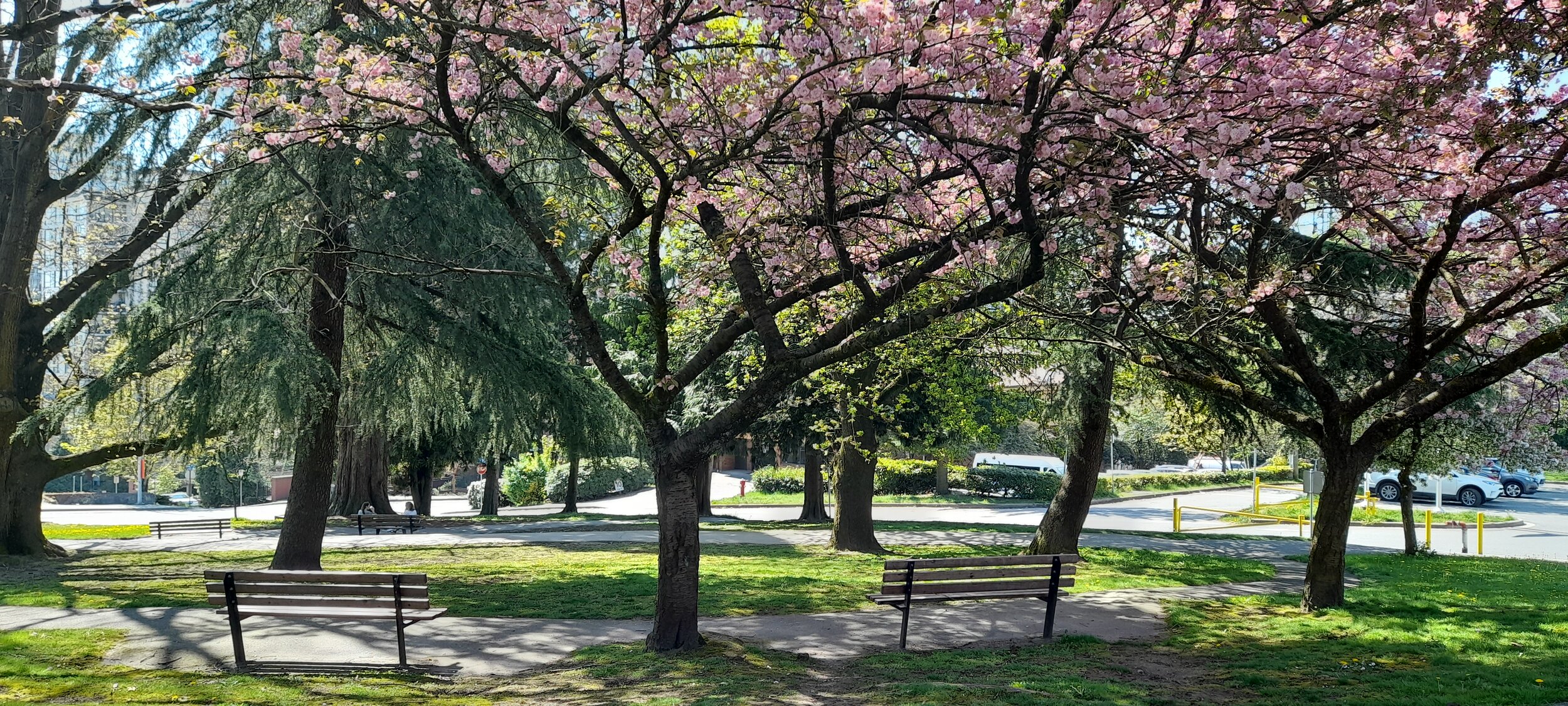
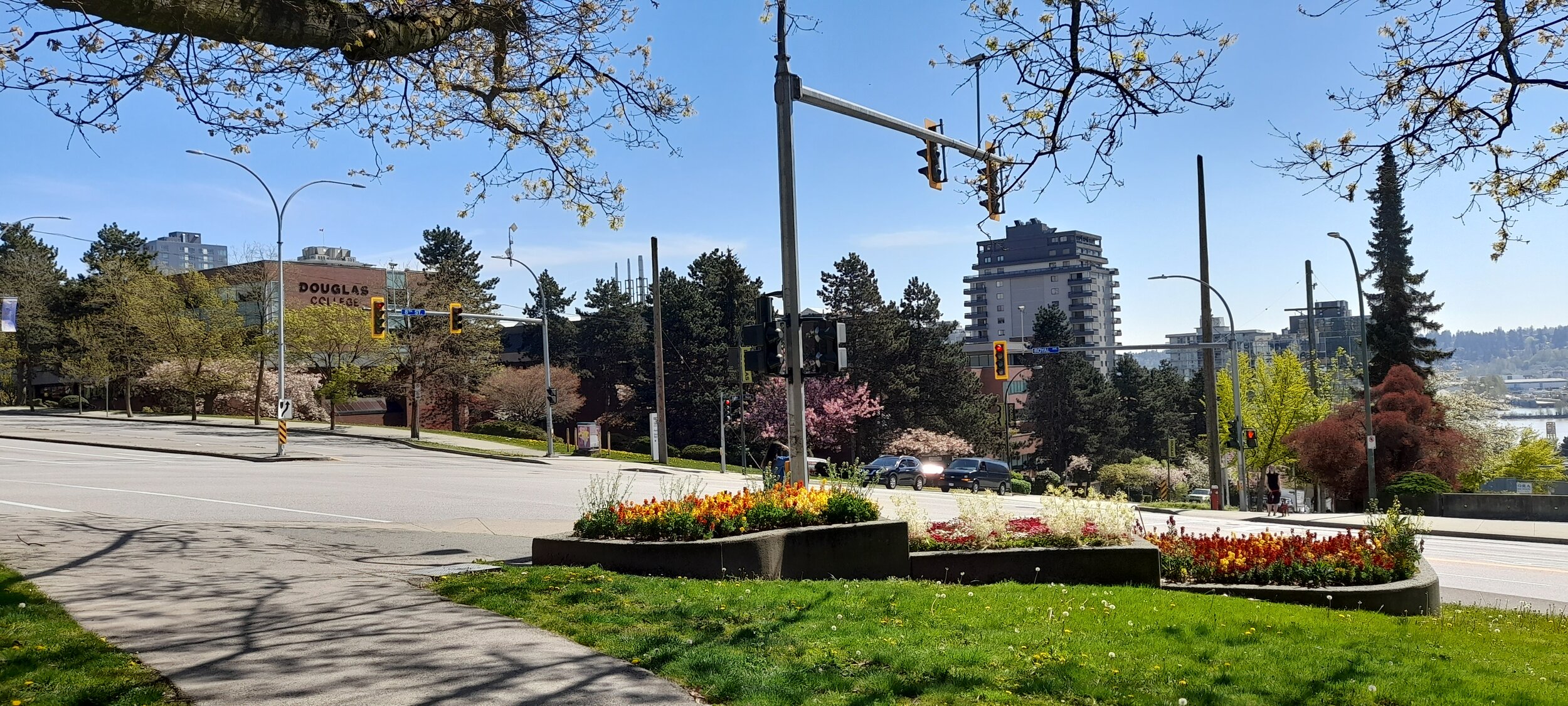
Keep heading along the same road and you’ll find yourself at the New Westminster SkyTrain station.
Happy Walking!
This blog post is written by BEST’s Isabel Garcia. #walkability
Walk along Byrne Creek: A nature walk connected by zero-emission transit
Our weekly walking route starts on Edmonds and goes along Byrne Creek.
For this week’s walking route tour, we have a short and easy one for you. Tip: You might want to try it soon as some major changes are anticipated in the area. And this weekend is expected to be a beautiful sunny one too!
We begin the route at Edmonds SkyTrain station. Right now this route is quite a calming, but it might not be as quiet as you can expect the development of the new Southgate City - a pedestrian-friendly development - to start soon.
Speaking of future plans, this neighborhood will soon be home to the new Skytrain Control Centre but as of today, Edmonds station and bus loop has a unique design. Westbound trains platforms are at street level and the bus stop is located in a convenient roundabout. The bus shelters share an interesting display that congregates all waiting passengers at the same location in the middle of the circle.
There are several options to walk around the station, but we chose to go down on Station Hill Drive towards the BC Parkway.
We crossed to the Parkway and walked along the paved trail. Did you know that this is a pedestrian and bike lane connecting Edmonds to Downtown New West? It’s a long walk (1 hour+) to downtown, but quite inviting we must say.
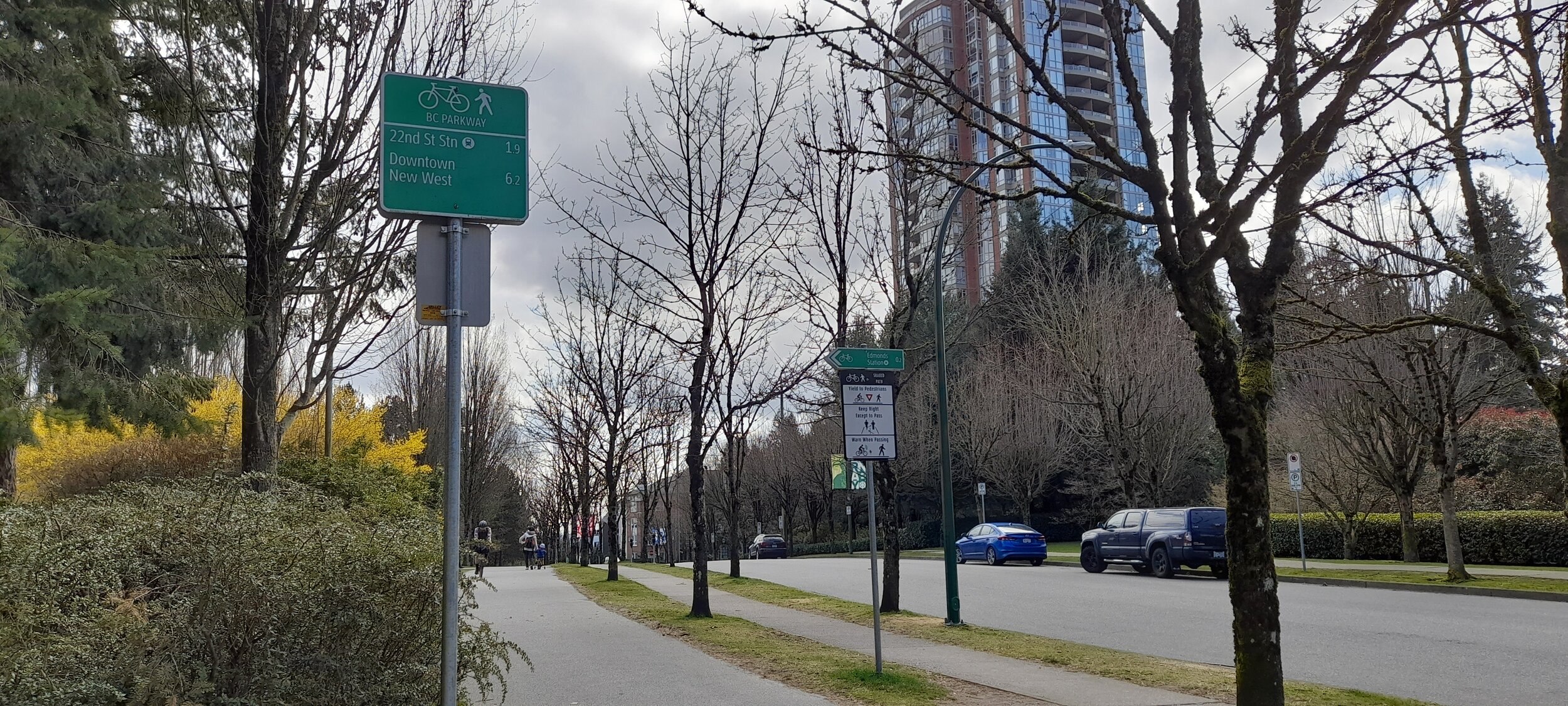
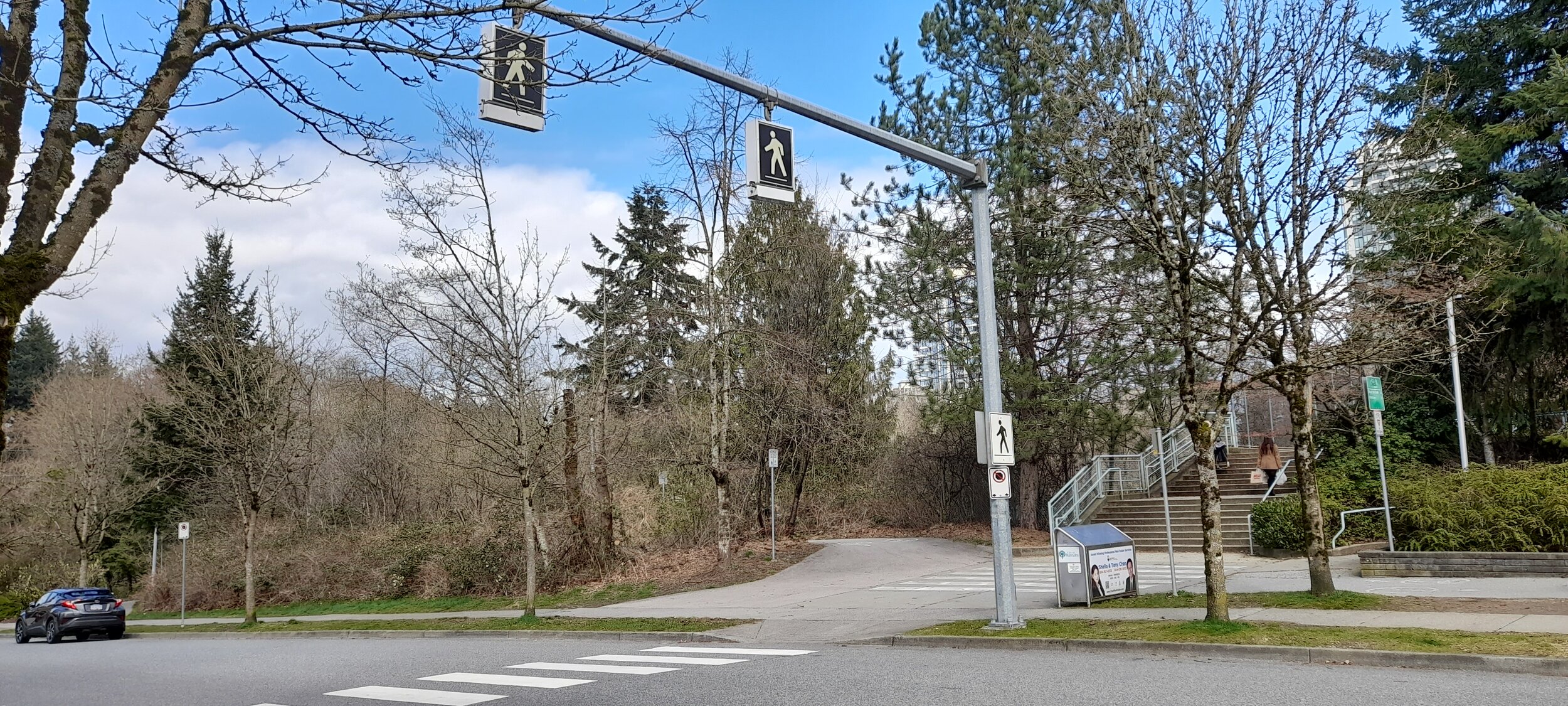
All the intersections with the road are well indicated and traffic wasn’t especially dense or fast.
On your left, you will see directions to Byrne Creek Secondary. If you hear some train track noises from behind the blackberry bushes, it’s from the SkyTrain maintenance and operations center located there.
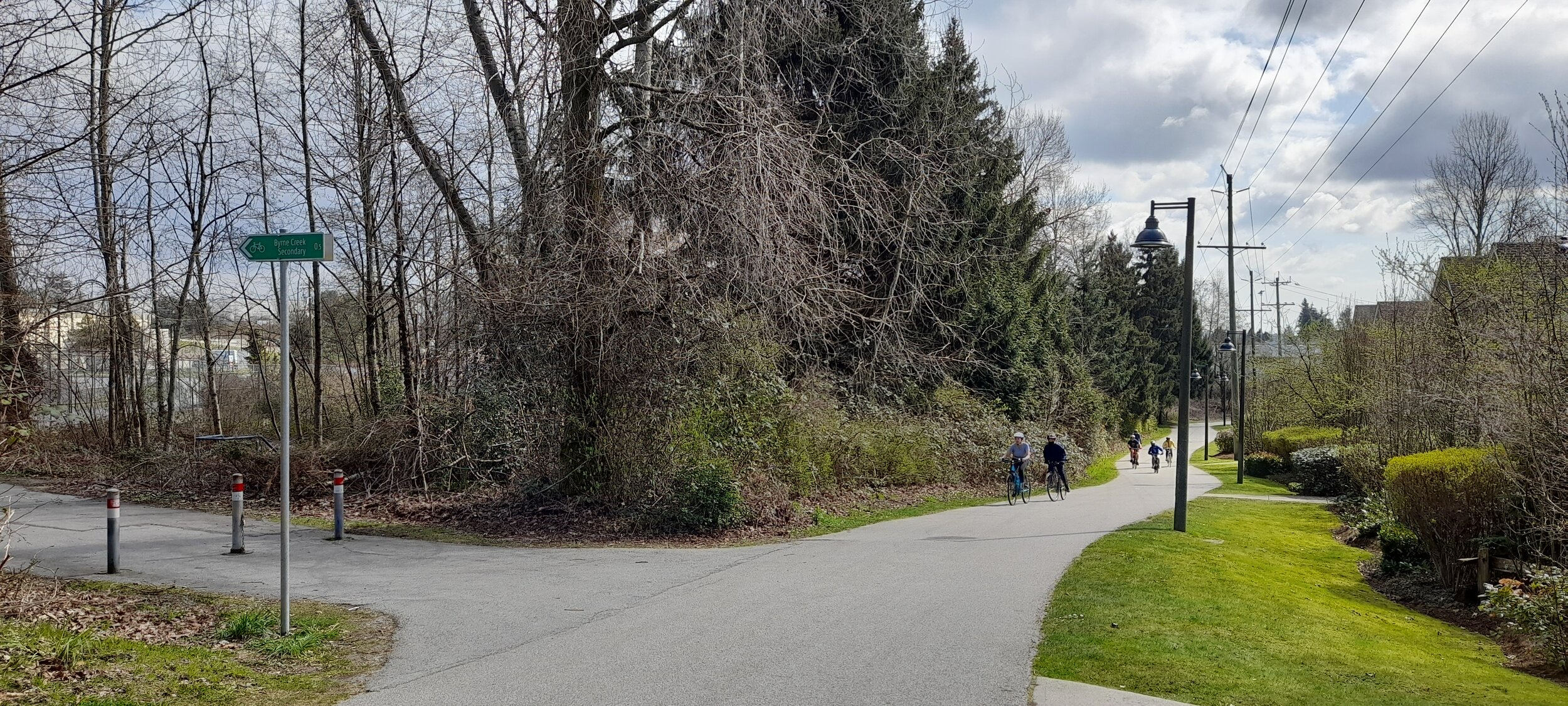
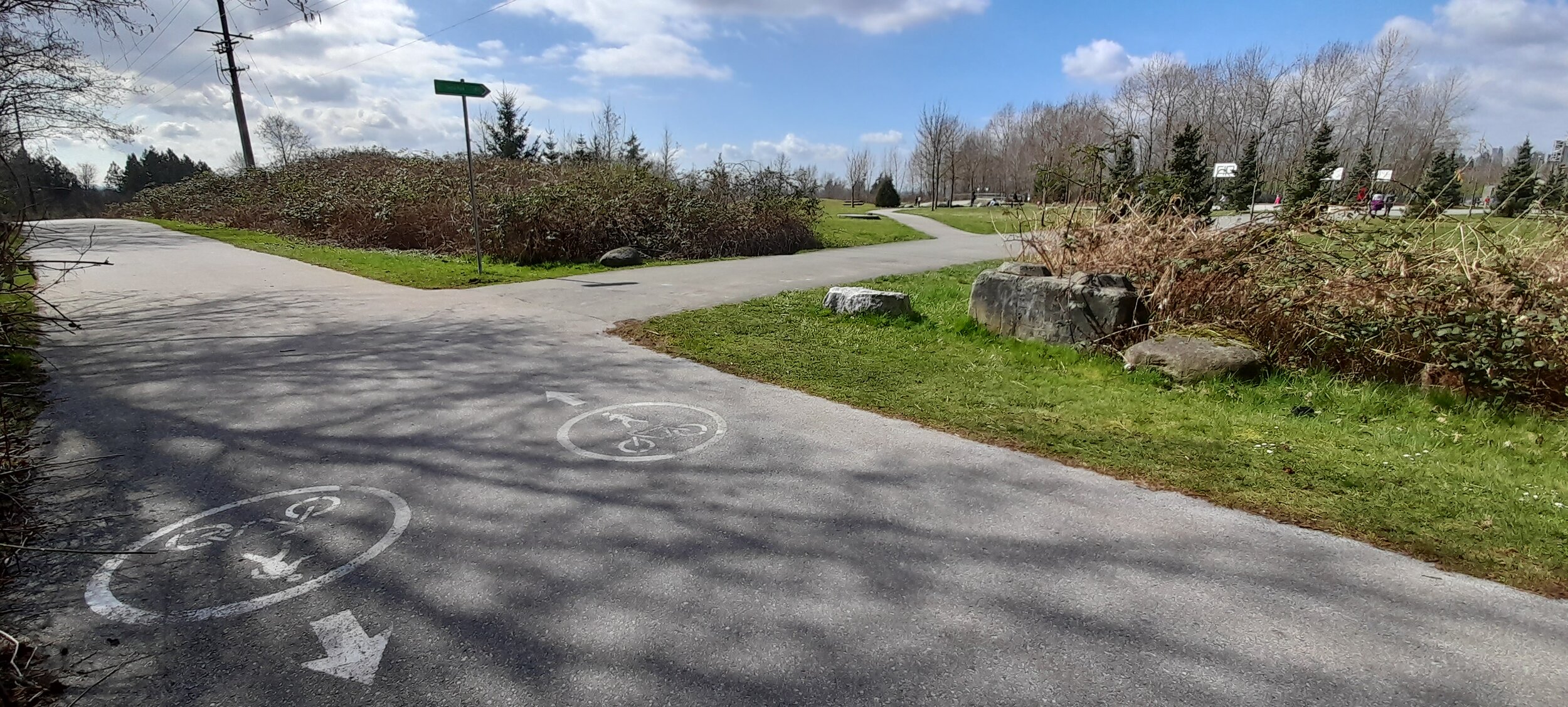
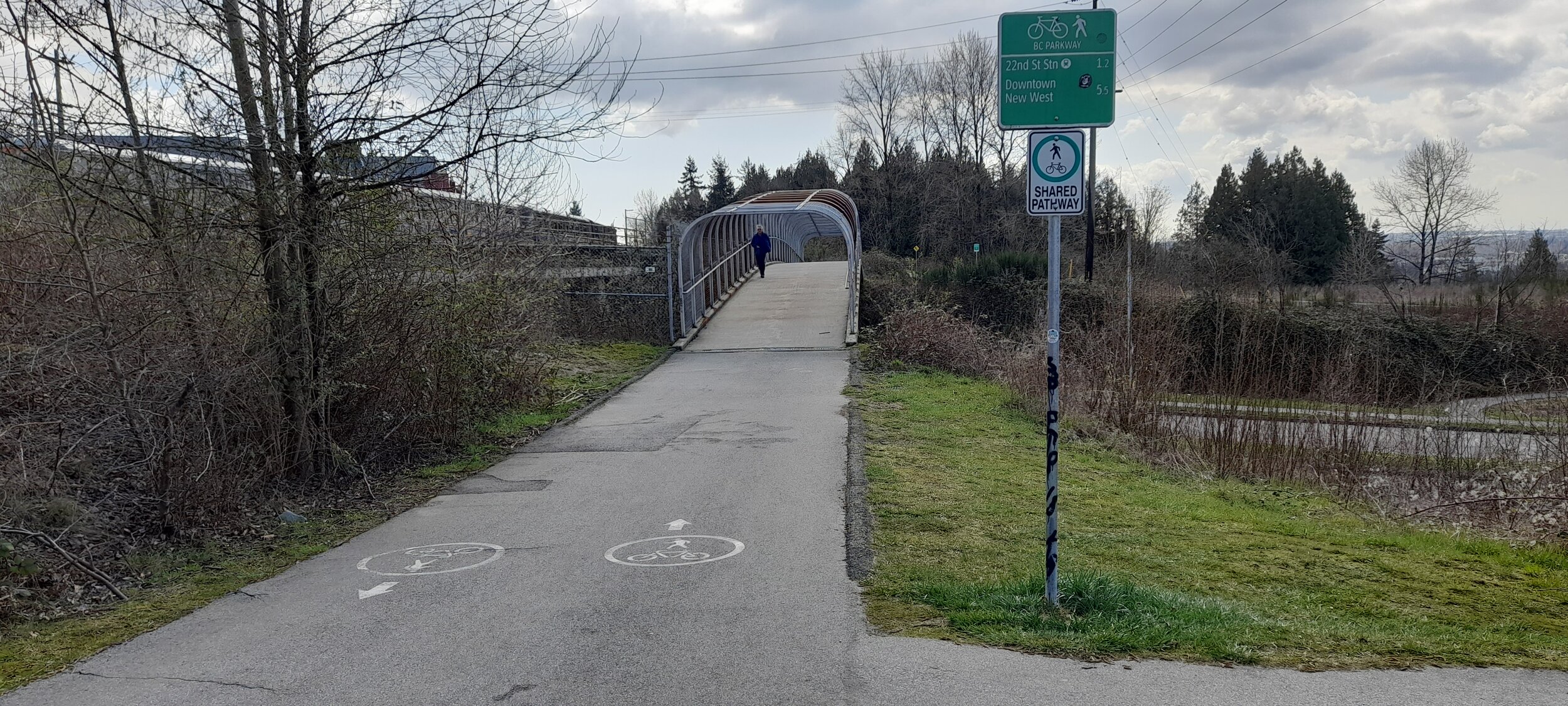
We kept walking towards Taylor Park which can be quite busy with school kids during their break time. There’s a well equipped playground in the area along with off-leash area for our four-legged friends.
We followed some of the trail and just managed to have a peek at the Byrne Creek urban trail, but it’s a nice long nature walk, highly recommended for enjoying some fresh air. Plan your leisure time well and you’ll have a great experience!
For our return journey, we took the bus route #100. It is located at Southridge Dr and Byrnepark Dr. The #100 also is the first route where TransLink has one of its first battery-electric buses running on trials. In January, they announced that they are incorporating another 15 such buses. Preserving this pristine nature walk to the fullest with zero-emission transit, we love Metro Vancouver!
Take a look at the virtual tour.
Happy Walking!
This blog post is written by BEST’s Isabel Garcia. #walkability
Walk30 2021: How to get your school to win the Challenge?
Naimah Asad is a mom of 3 kids, teacher of Grade 4 in Lord Kelvin and she takes walking seriously. In 2018 they won the first time, while she was full-term pregnant. She kindly answered some of our questions and we wanted to share them with you.
Do you want to participate in Walk30 but are not sure how to involve your class? Naimah Asad, a Grade 4 teacher at Lord Kelvin School (New Westminster) and mother of 3, takes walking seriously. She has participated in 2018 and 2019, and her class won the Walk30 Challenge both years! In 2019, Naimah was pregnant so what better example to advocate for the health benefits of walking everyday!
We got a great opportunity to speak to her, about her motivation and tips to transfer this love for walking among her class. Read on and we’re sure that you’ll feel compelled to for your own team and register for the Challenge this year.
“When I teach them about the history of our local community, we do a big project in Social Studies where they create a miniature New Westminster city using recyclable materials. For our project, we walk to different neighbourhoods in New Westminster to see the landmarks and major streets so students can have a better understanding of the city. ”
BEST: How many students were on your team in the past Walk30 seasons?
Naimah: During the two years that my class participated, I had 30 students on my team. This year, I have 28 students.
BEST: Congratulations on winning the past edition. How do you go about motivating your class?
Naimah: Physical exercise including daily morning laps is a regular part of my day. I introduced the benefits of morning walks right from September. I tell them about the importance of staying fit and healthy. Also, I encourage them to develop a healthy lifestyle and to run/walk daily which will benefit them when they grow old. I like to throw small challenges at my students in which they learn that when they believe in themselves, they will be successful. We go out for our daily laps, rain or shine. Students are aware they are competing against other classes and that excites them too!
BEST: How did you track of your class’ walking minutes?
Naimah: We do it together as one team at the end of each day. Some days we walk in groups, and record the minutes on our classroom board. We add them all up at the end of the day. This also motivates students to set up a goal for the next day, and chase it down.
BEST: Does the class do this as a team always for the Challenge?
Naimah: We always walk together as a class. During the five weeks of the walking challenge, students arrive at school 30 minutes prior to the morning bell. Students walk for 30 minutes until the school bell rings. After the morning announcements, we go outside for another 30 minutes or so, depending on our daily schedule. I’ve noticed that instead of walking for 2 hours straight, it’s always easier to divide our walking minutes into small chunks so we don’t get burnt out. To top it all up, during those five weeks, I plan many walking field trips across the neighbourhood which of course helps keep the walks interesting.
BEST: What did you feel was the easiest part of the challenge?
Naimah: I like how I can integrate Walk30 with other subjects. When I teach them about the history of our local community, we do a big project in Social Studies where they create a miniature New Westminster city using recyclable materials. For our project, we walk to different neighbourhoods in New Westminster to see the landmarks and major streets so students can have a better understanding of the city. This way, we don’t have to worry about adding extra minutes to the challenge each day. Walk30 ties in well with our curriculum.
BEST: What constraints or difficulties did you face in the past seasons?
Naimah: The year I had no extra help in my classroom was the year I was faced with a lot of challenges. I had to make sure in order to leave the school premises I had enough adults. Another challenge is making sure students are prepared for the weather.
BEST: How are you planning to motivate your class this year?
“Daily morning laps are a huge part of my day and I start motivating them early on.”
Naimah: This ‘pandemic year’, students are already quite eager to go out for walks as they didn’t have any in-person field trips. Like I mentioned earlier, everyday morning laps are a huge part of our day and I start motivating them early on building up to the five week challenge period. By the time of the kick-off, students have already built stamina and are ready for it.
BEST: What do the kids love the most about Walk30?
“My students like to go out for long walks as they are paired up with a buddy.”
Naimah: They love walking as a group. They also like to learn from outside of the four walls of the classroom. Some students have a lot of screen-time at home, this challenge helps them get the much-needed outdoor time that they need.
BEST: Is there something else that you would like us to share with the Walk30 community?
“Students minds are more engaged and focused when they are outside.”
Naimah: I think it is very important to build an active lifestyle right from the very beginning. Of course, keeping the challenge interesting has been a key part to the success. I believe that learning does not only happen just by staying confined within the four walls of a classroom or electronically through the internet. The child’s mind is way more more engaged and focused when they are in the outdoors.

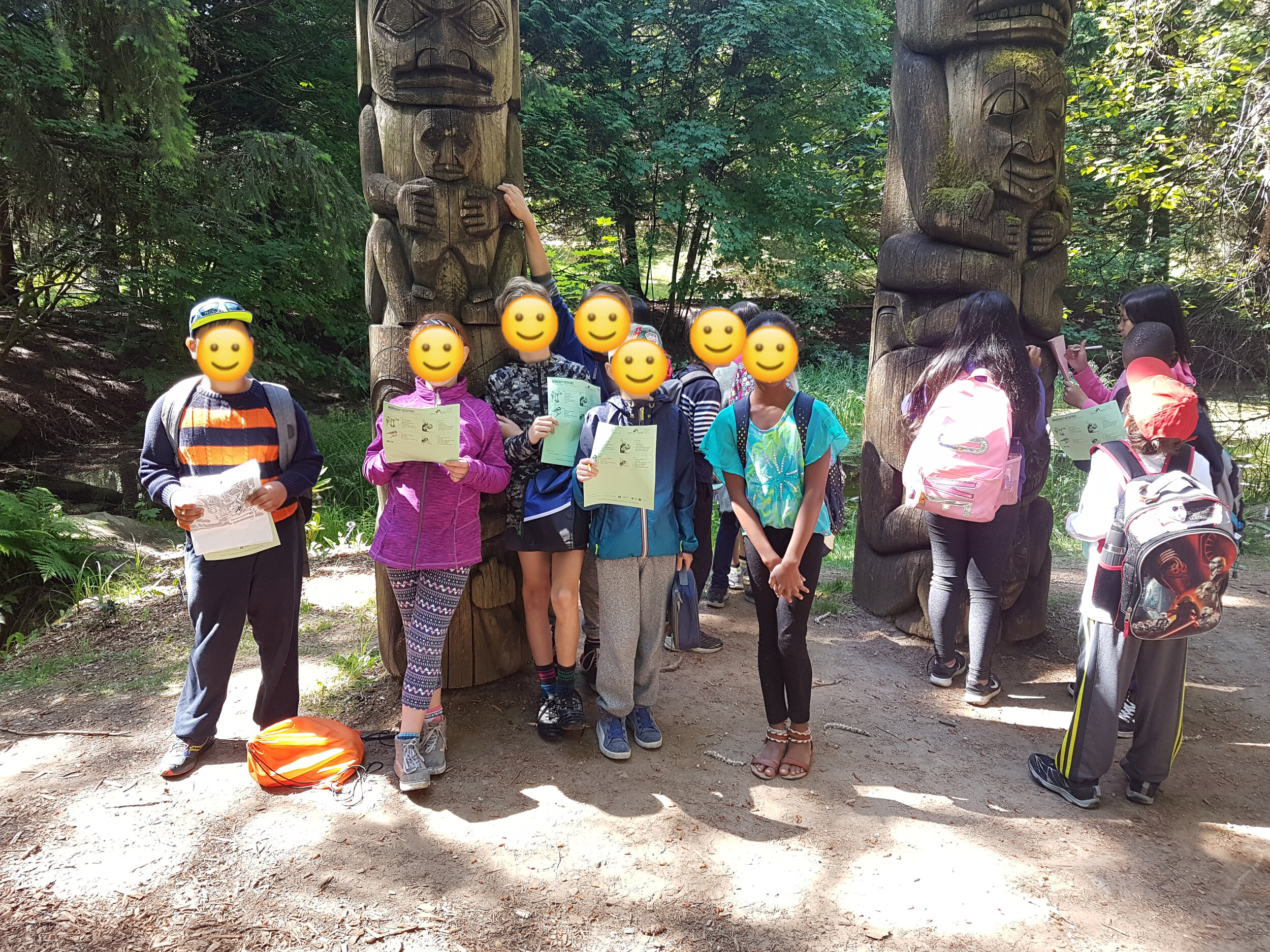
Walk30 Burnaby | New West 2021 Challenge is sponsored by:
Walkable New Westminster- Exploring the renewed Pier Park
This week, we visited the renewed Pier Park in New Westminster. It officially opened on April 2nd, and we didn’t want to miss it!
Since being able to enjoy the local outdoors has become an indispensable part of our daily routine, sometimes we find ourselves wondering where to go and what to do. We all crave leisure activities that are fun while remaining safely distanced (avoiding crowds). Walking offers exactly that.
This week, we visited the renewed Pier Park in New Westminster. It officially opened on April 2nd, and we couldn’t resist visiting! Many might be aware of the unfortunate fire last year, and since then the City has been working relentlessly to reopen this delightful walking path.
We covered the fully accessible route from New Westminster SkyTrain station, right through the Boardwalk along the River, followed with the Pier Park, and then Front Street. In total, this path is around 3km and without any uphill! (From the overpass there is a steep inclined descent to Front Street. You may want to be cautious while rolling as the bottom is a host to a bunch of bike racks.)
Once there, you will notice that the train tracks and the River are the features of this playful area. If you are in a hurry, you could walk this in about 30 minutes, but we recommend making the most of it and give yourself time to soak it all in as if you were a tourist: slower pace and noticing details that you might see every day and never actually noticed how captivating they are.
The best way to get to the Quay from the New Westminster station is through the McInnes overpass. If you arrive by train, you need to go down one level. Since last summer, this overpass is part of the Streets for People program and has a lane dedicated to pedestrians.
Turn left and enter the Boardwalk. The informational displays, the flowers and the businesses along it make it a perfect field trip day especially with kids.
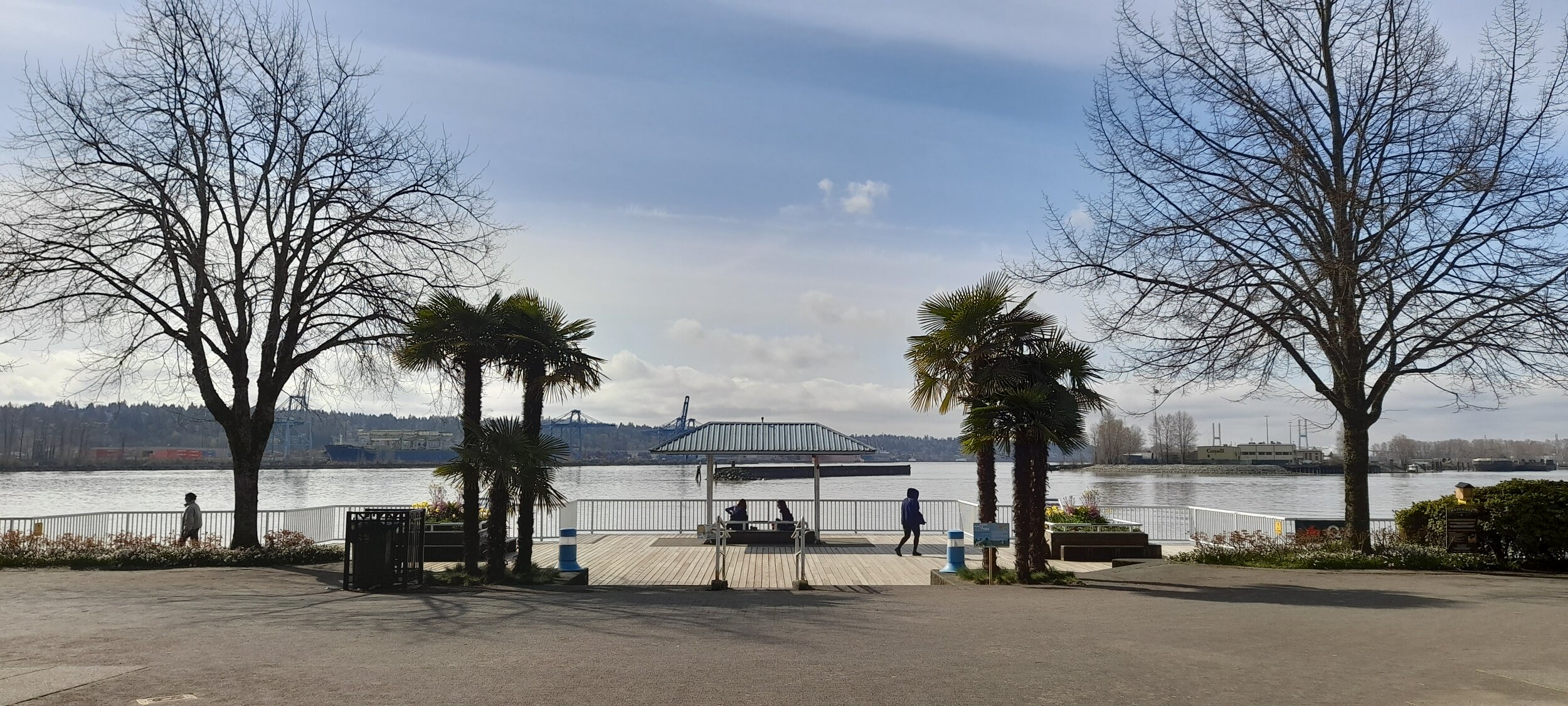

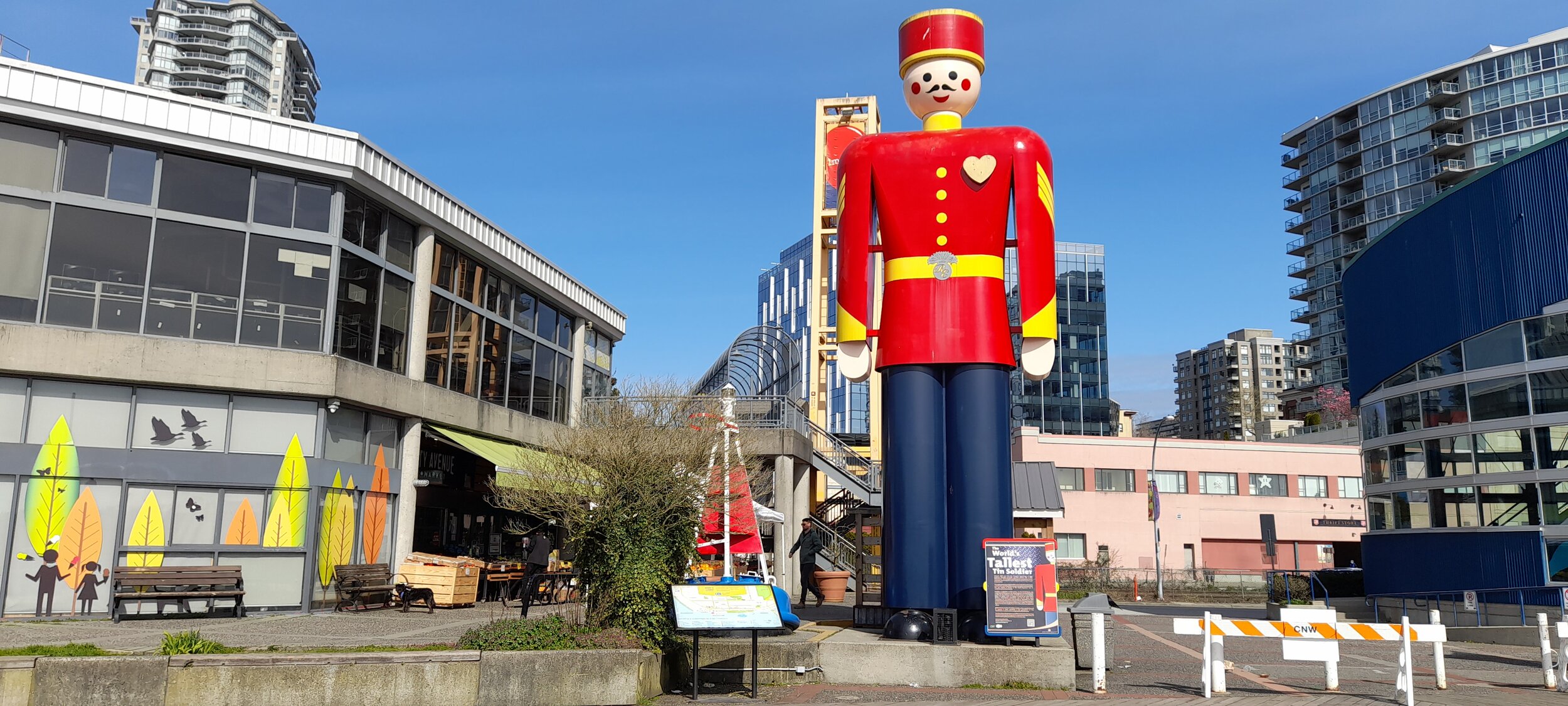
There’s a diversion in place for Pier Park owing to the construction work ongoing. You may follow the map displayed onsite and walk whichever way you feel more comfortable with. We walked the accessible track, crossed the train tracks and on to the Columbia Street until 6th Ave to link back with the overpass to Pier Park.
Columbia Street is a distinguished commercial street. You will find everything from fancy dress shops, food places and the best of all, art that you can only see and truly admire when you walk alongside them.
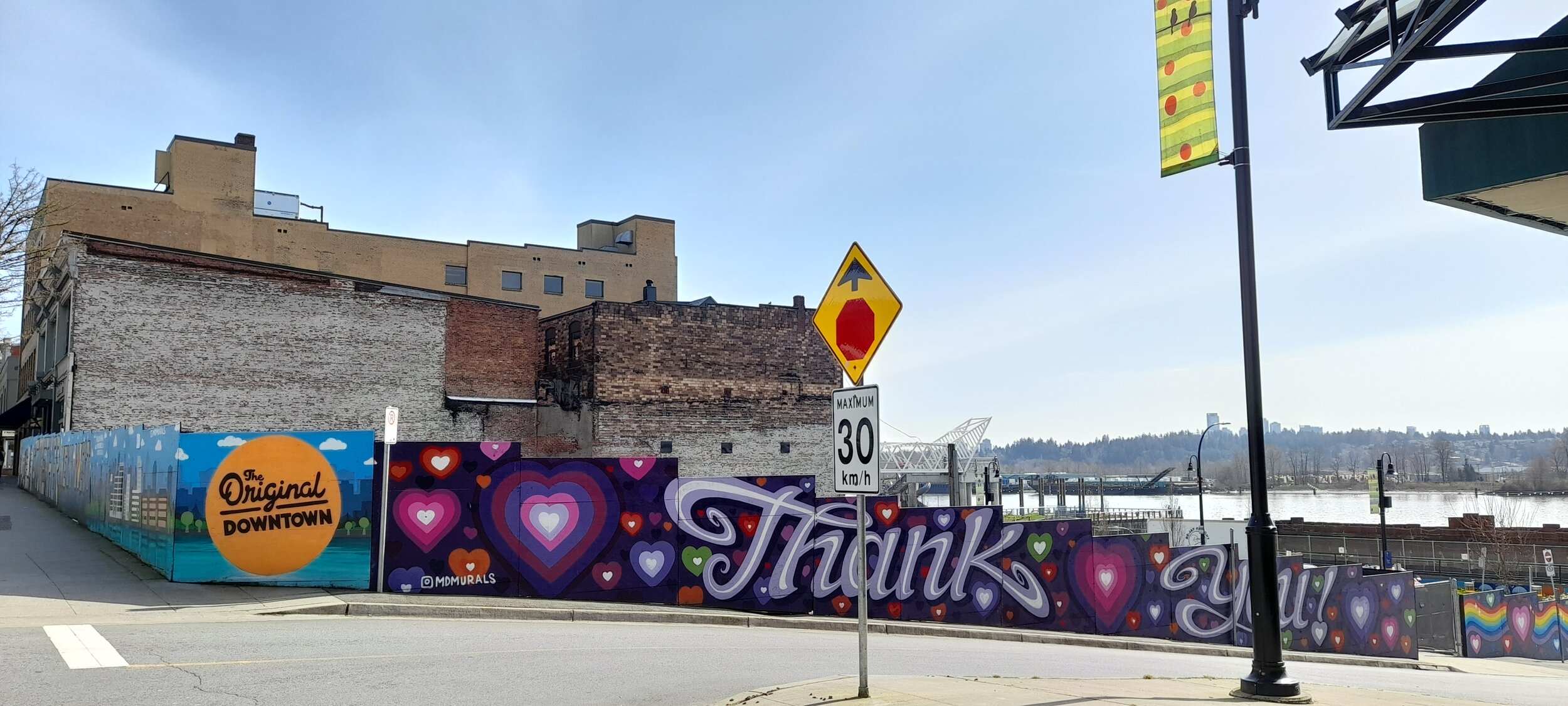
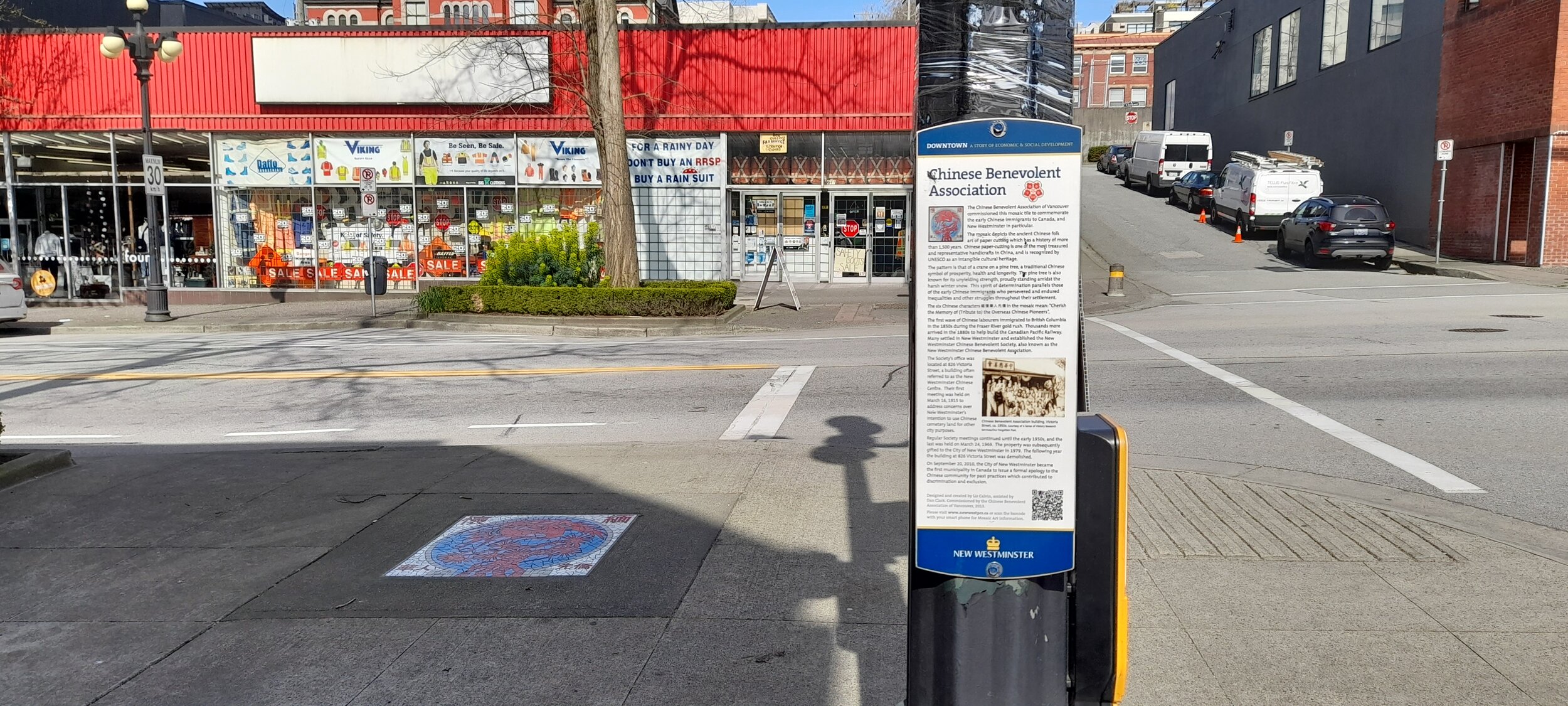

If you haven’t been able to entertain your little ones while walking on this route yet, wait until you cross the overpass and there you will see the new park. It is designed for the whole family, poured rubber floor, swings, slides, and chess tables. A delight for the young ones.
It might get busy, but don’t worry, the previous playground still is open, a couple of meters ahead. On the esplanade, there are lounge chairs, picnic tables, grassy areas, and amazing views of the two bridges. Public washrooms are conveniently located so that you have all you need to extend your stay at this location.
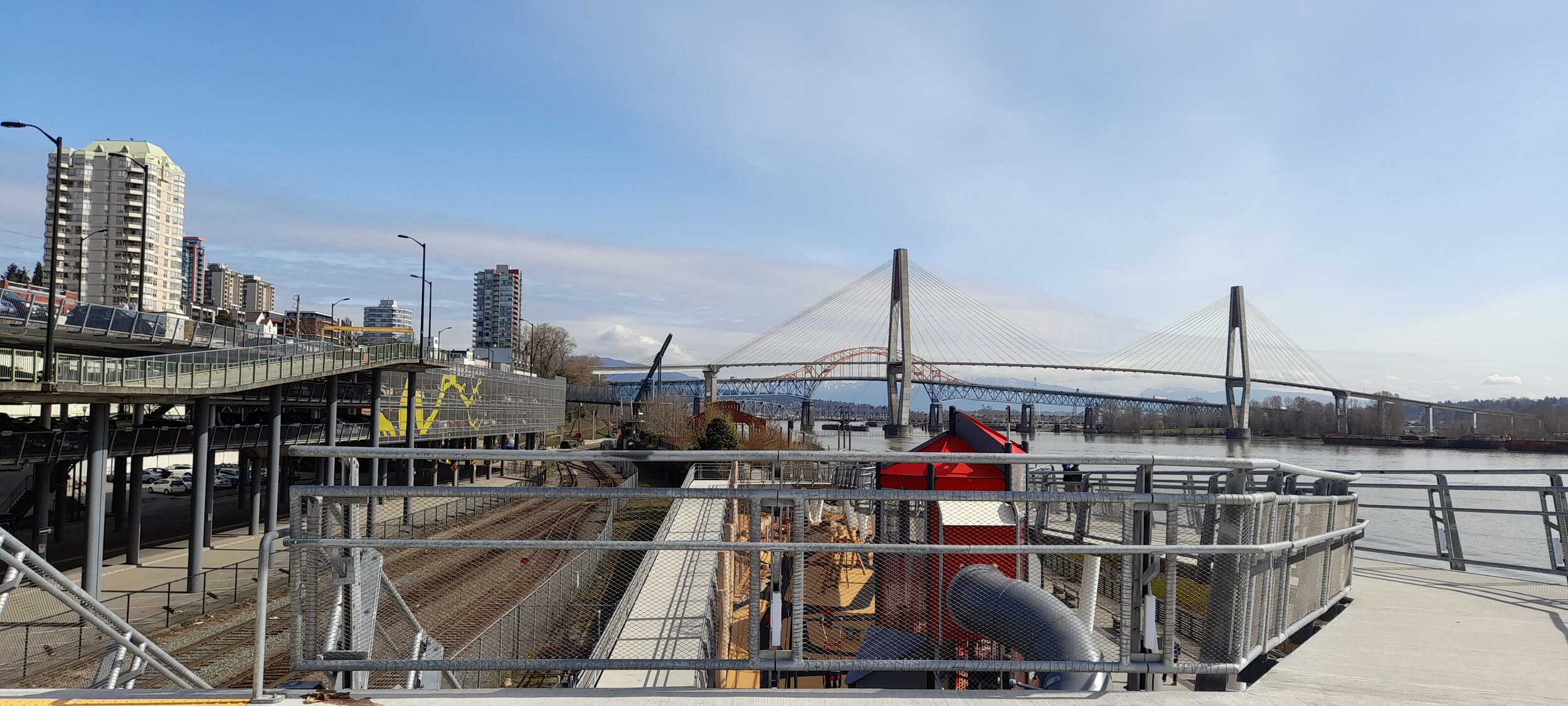
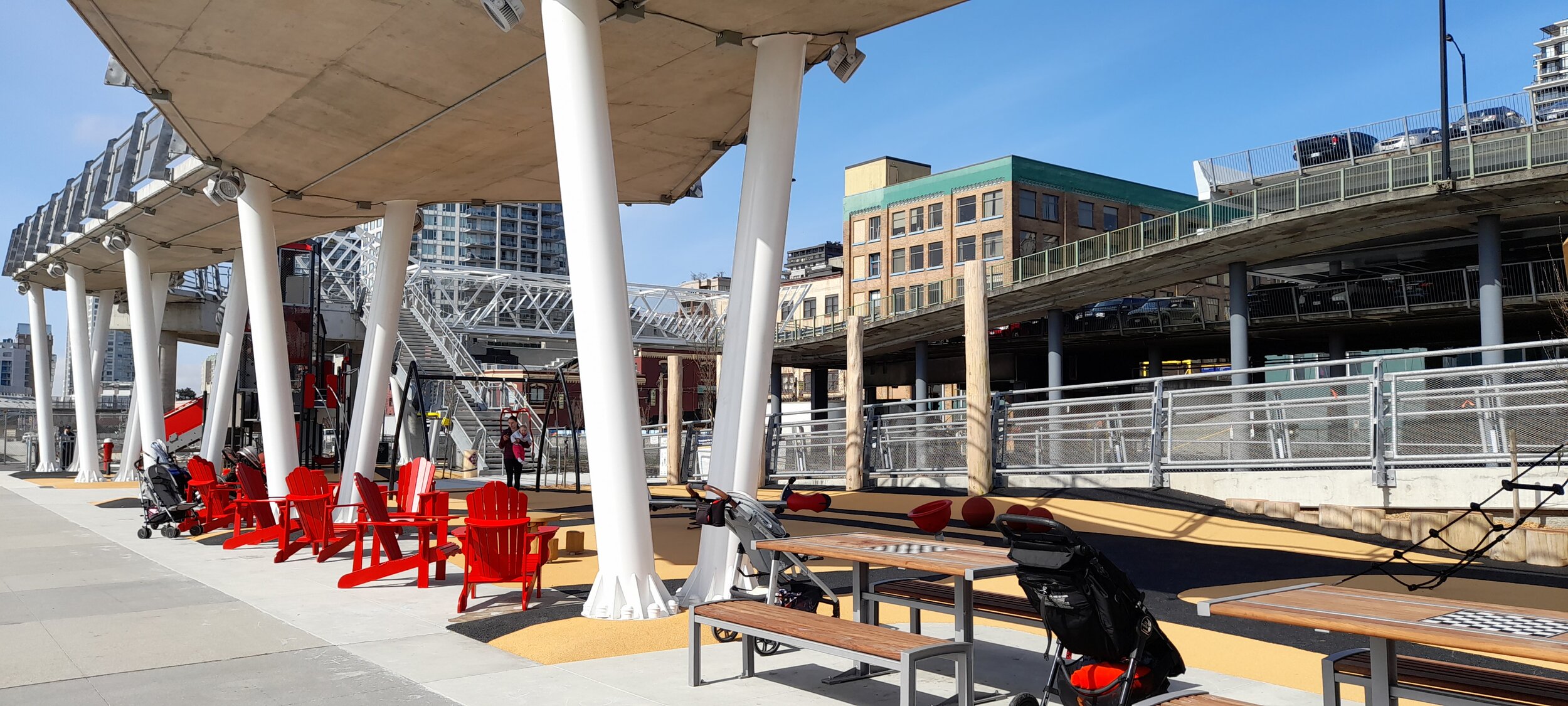
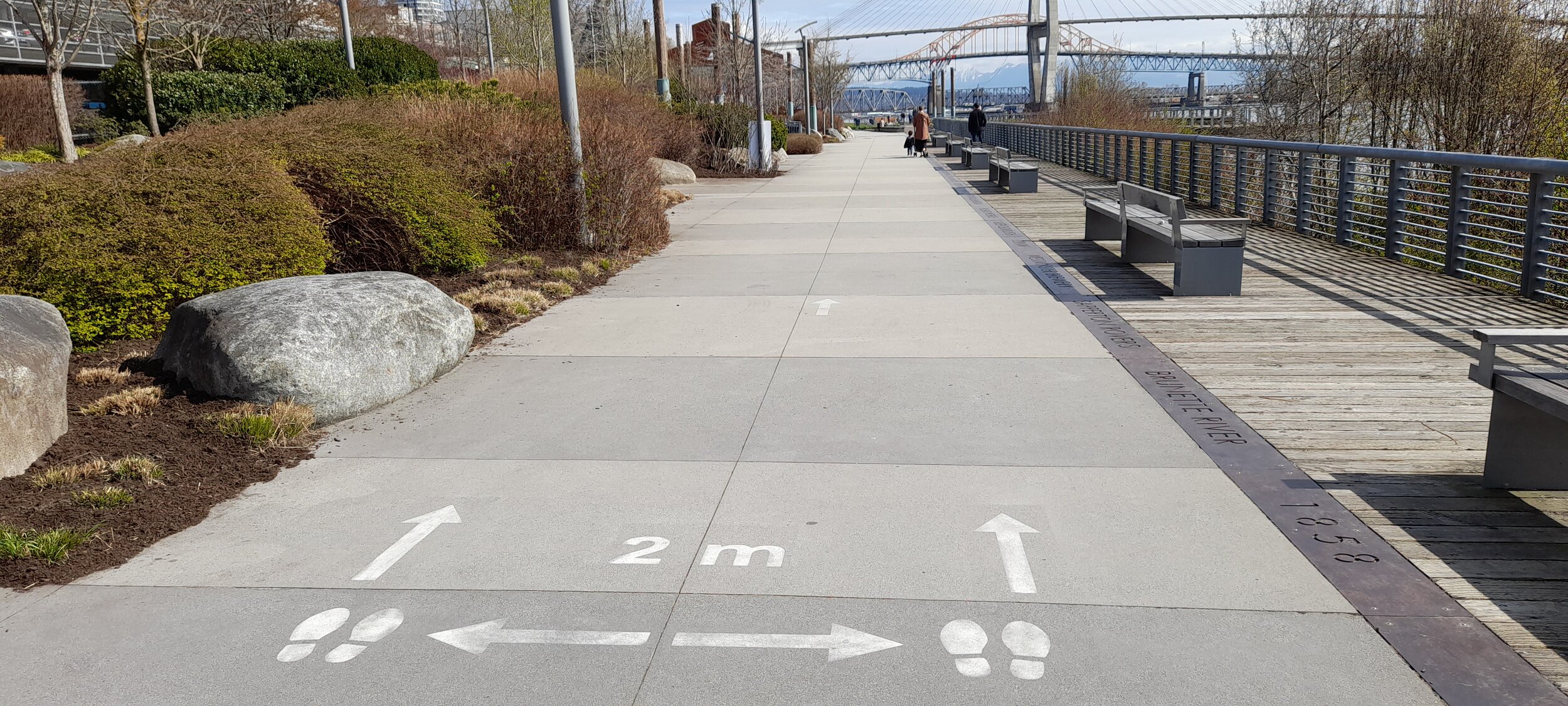
To get back to a transit station, you could use the elevator to 4th, or go back on the overpass to New Westminster station. To close the loop, we walked along Front Street. This stretch has a unique character, small shops, mural art and the famous interactive street lamps. Wow!
We turned at Begbie followed Columbia, passed by Hyack Square and the Anvil Centre. The station is just across. The accessible entrance is just around the block on Carnavon, don’t just tap your Compass Card in the first gates you see, go inside the mall and to the elevator first.
Hope you enjoy the virtual tour and take a walk on your own soon!
Happy Walking!
This blog post is written by BEST’s Isabel Garcia. #walkability
The Burnaby Lake: a perfect nature-walk right within the city
For those who like to walk, who are avid walkers, we bring a walking route that might be too long for our standards: 12.5 km. At a slow and comfortable pace could take you around 3 hours to cover. Don’t be intimidated and try parts of the route.
Regular walking and being in contact with nature are two very important habits one must cultivate as a part of their everyday ‘To-dos’. We’re fortunate that we are able to cherish close-to-nature walking havens in the Metro Vancouver area and above all access them conveniently through public transit.
This week we take you around the Burnaby Lake. It is located in the central area of Burnaby and it is part of the Central Valley Greenway. We took the Millenium Line and arrived at Sperling/Burnaby Lake SkyTrain station. The station is a hub for three bus routes: 144 (Metrotown Station-SFU), 110 (Lougheed Station-Metrotown Station), 134 (Brentwood Station-Lake City Station).
Right out of the station, one of the outstanding features is the pedestrian and cycling overpass. This bridge was completed in 2009 is access friendly. A gentle ramp all the way up and down across the Central Valley Greenway over the Burlington Northern rail tracks.
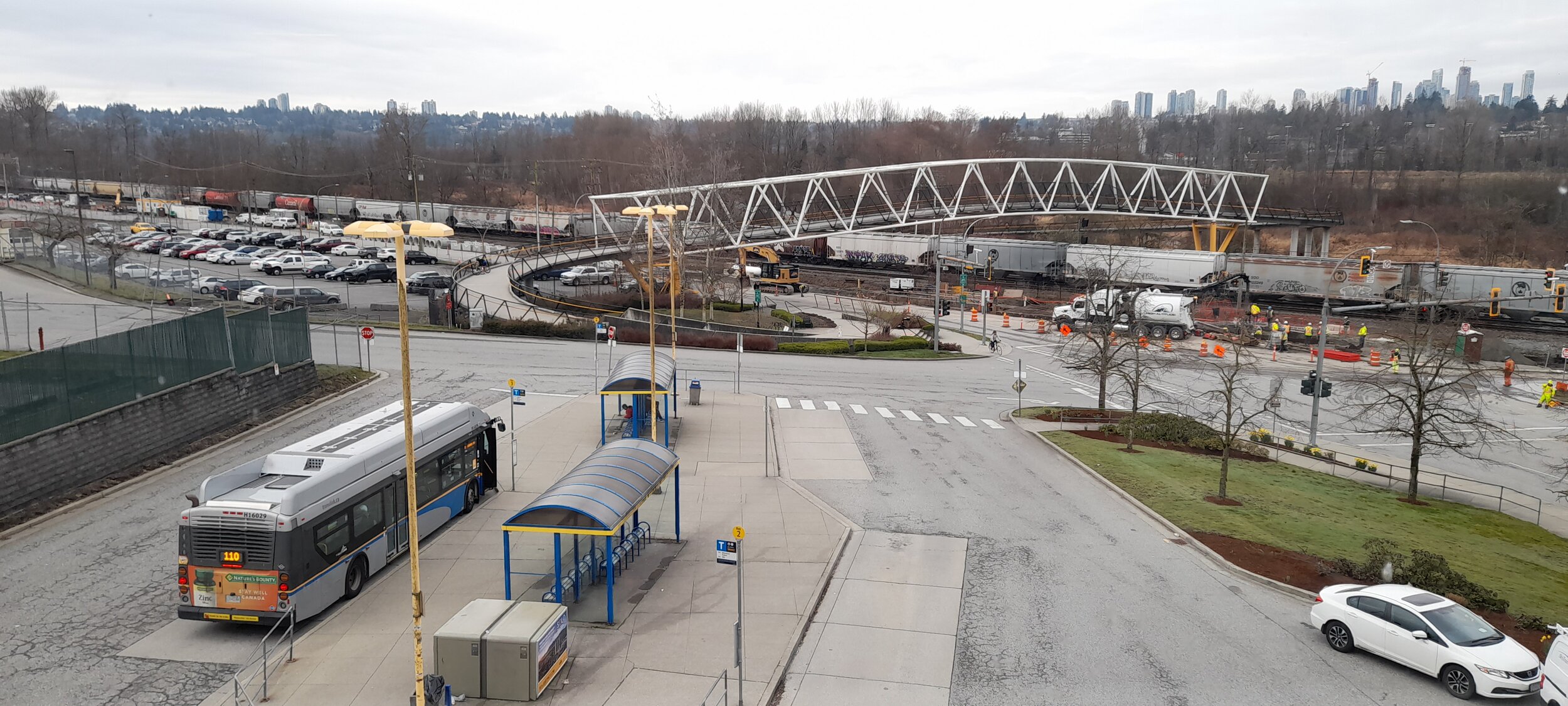
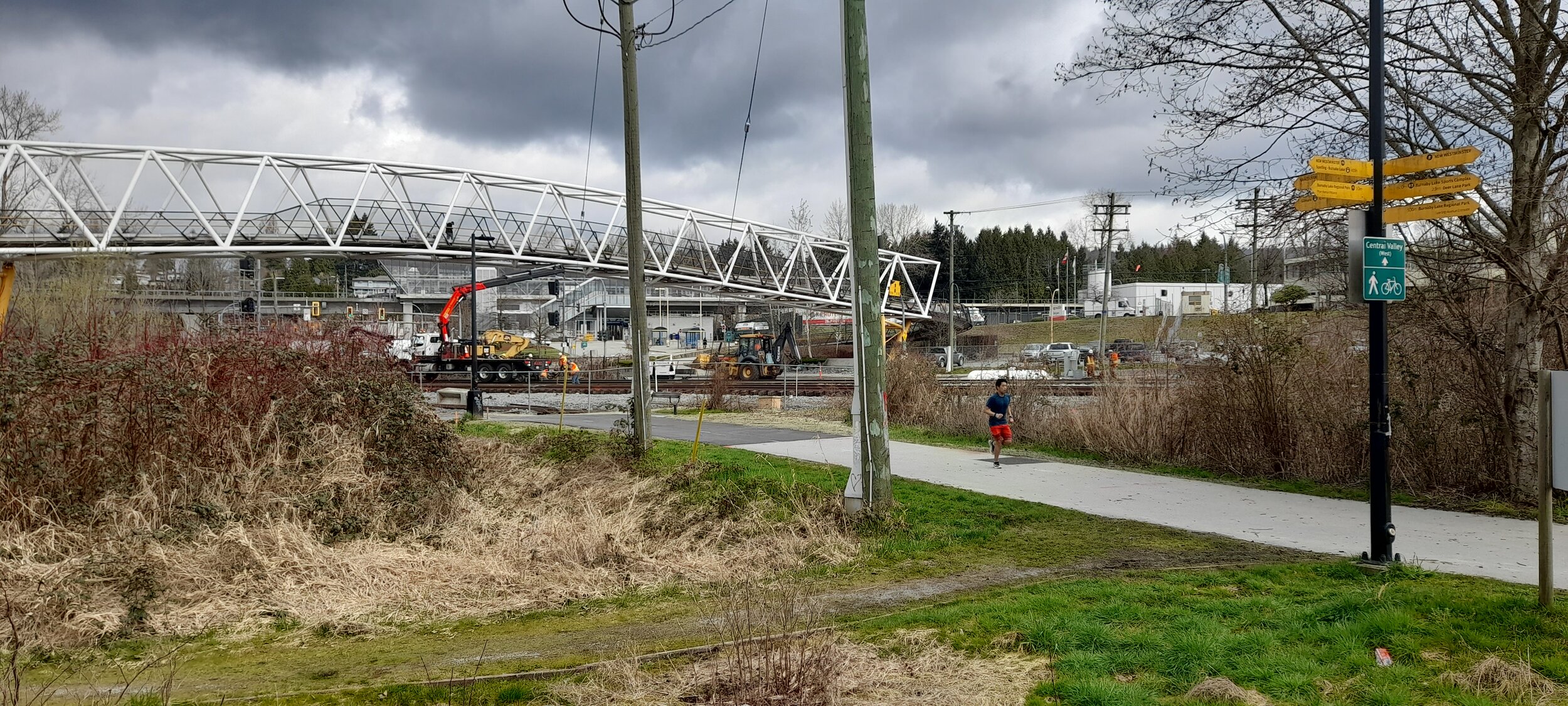

We sure hope you love to walk this route as much as we did as this route that is 12.5 km long - a little longer than the usual routes that we’ve published so far. Give it 2-3 hours and enjoy a slow stroll along the route. We bet that you won’t regret it. Although it’s mostly flat, the route we did here is not fully accessible due to two portions featuring short flight of stairs.
Got kids on strollers? Or if you’re looking for an accessible route, we suggest starting the walk (clockwise) from the transit hub heading to the habitat area. This way, it is a perfect walking family day-out. This way the route is shorter viz., 5 km (approx. 1 hour long) until the Cariboo Dam. It is in this stretch where you will find the watch-tower and there are public washrooms available. A nice addition is also that this route has a couple of picnic tables convenient for having that delightful outdoor snack-time before you head back.
Within the Still Creek area sits the Burnaby Lake Nature House which also features public washrooms. If you follow trail, you will come up to two points of interests: the tower and a deck which is ideal for observing the beautiful bird-life that the park offers.

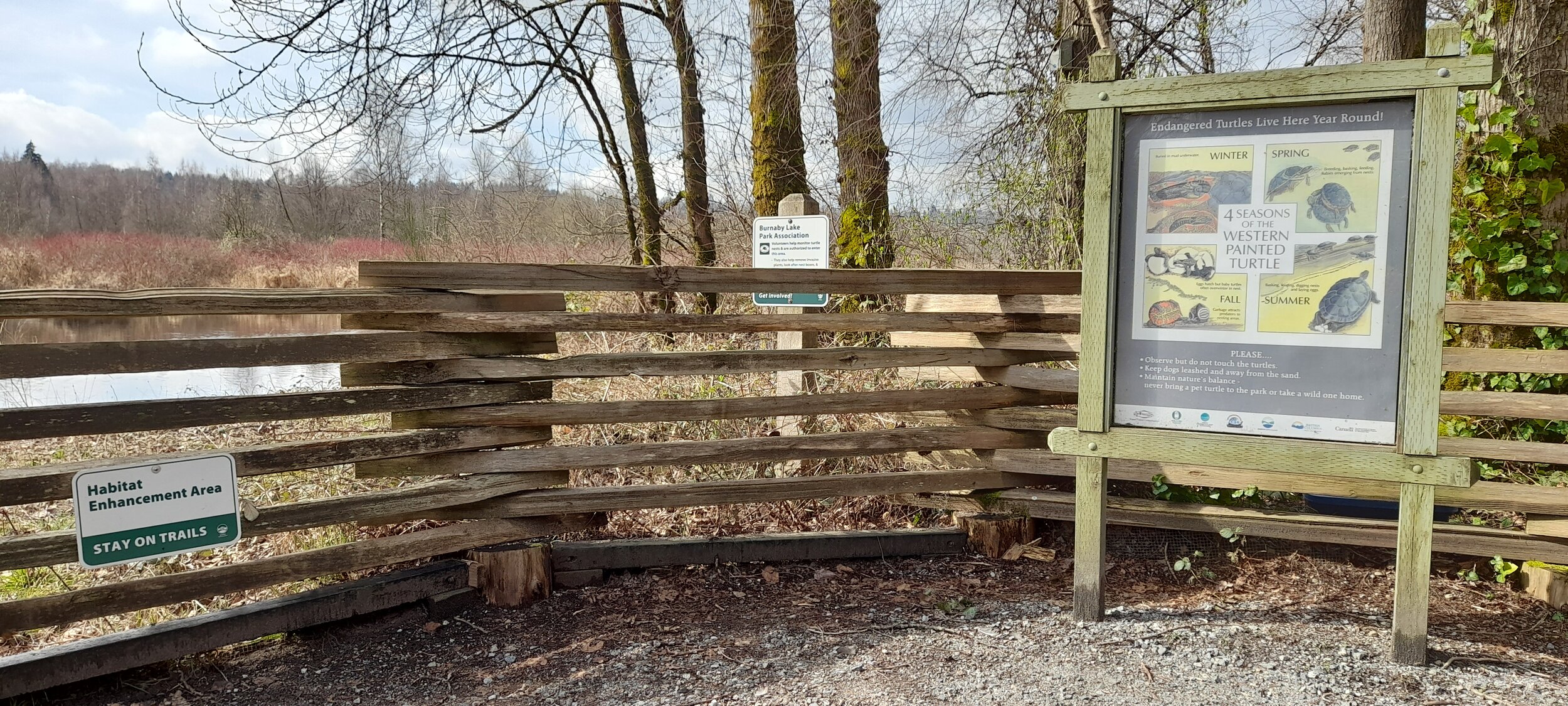
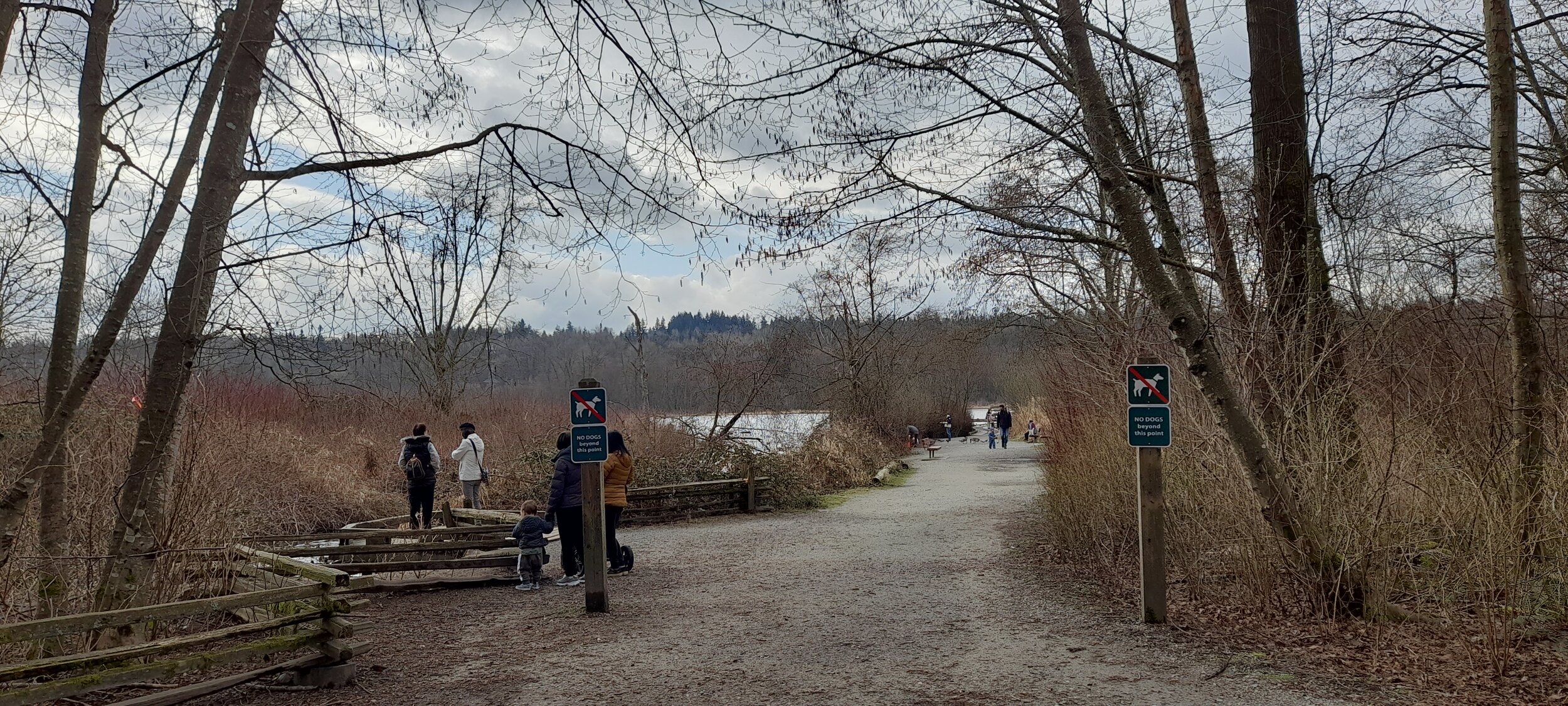
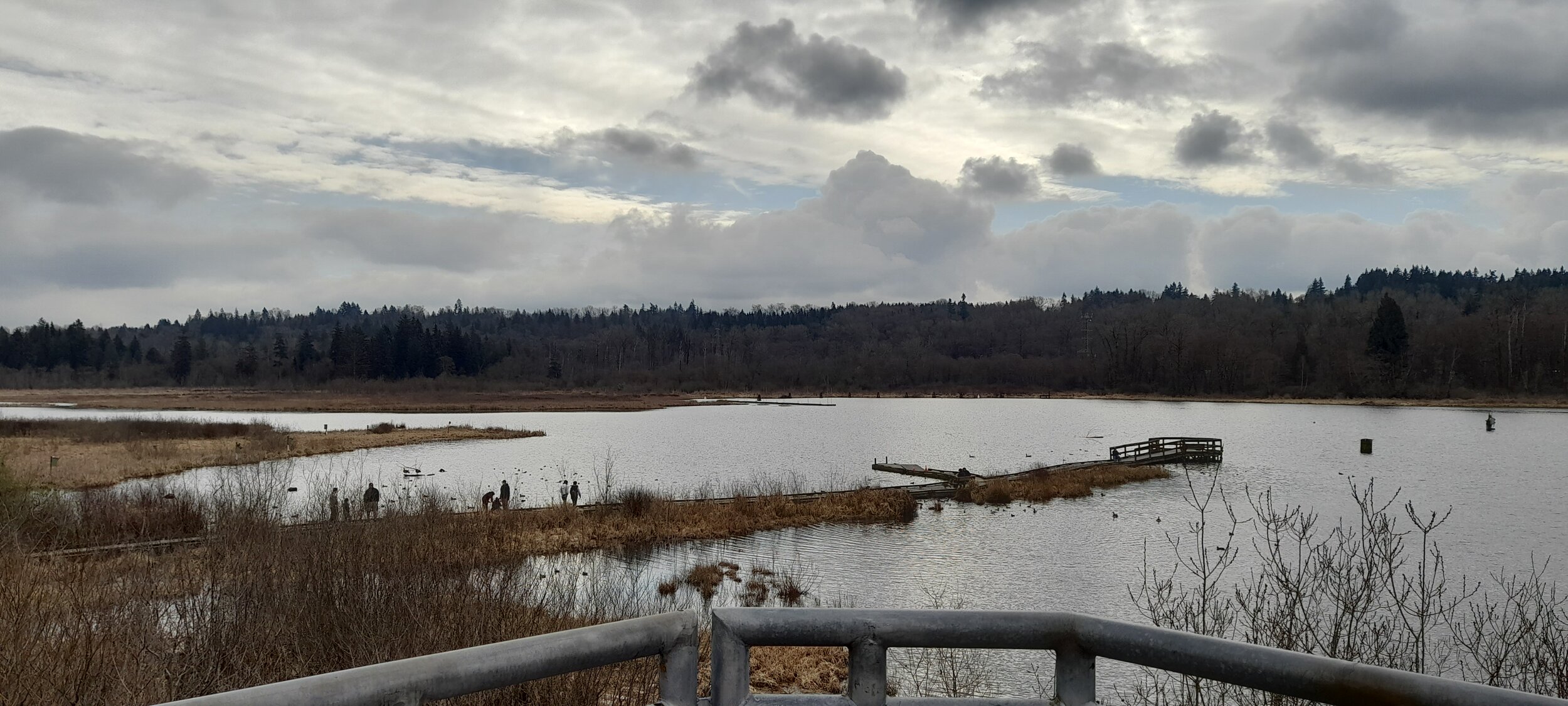
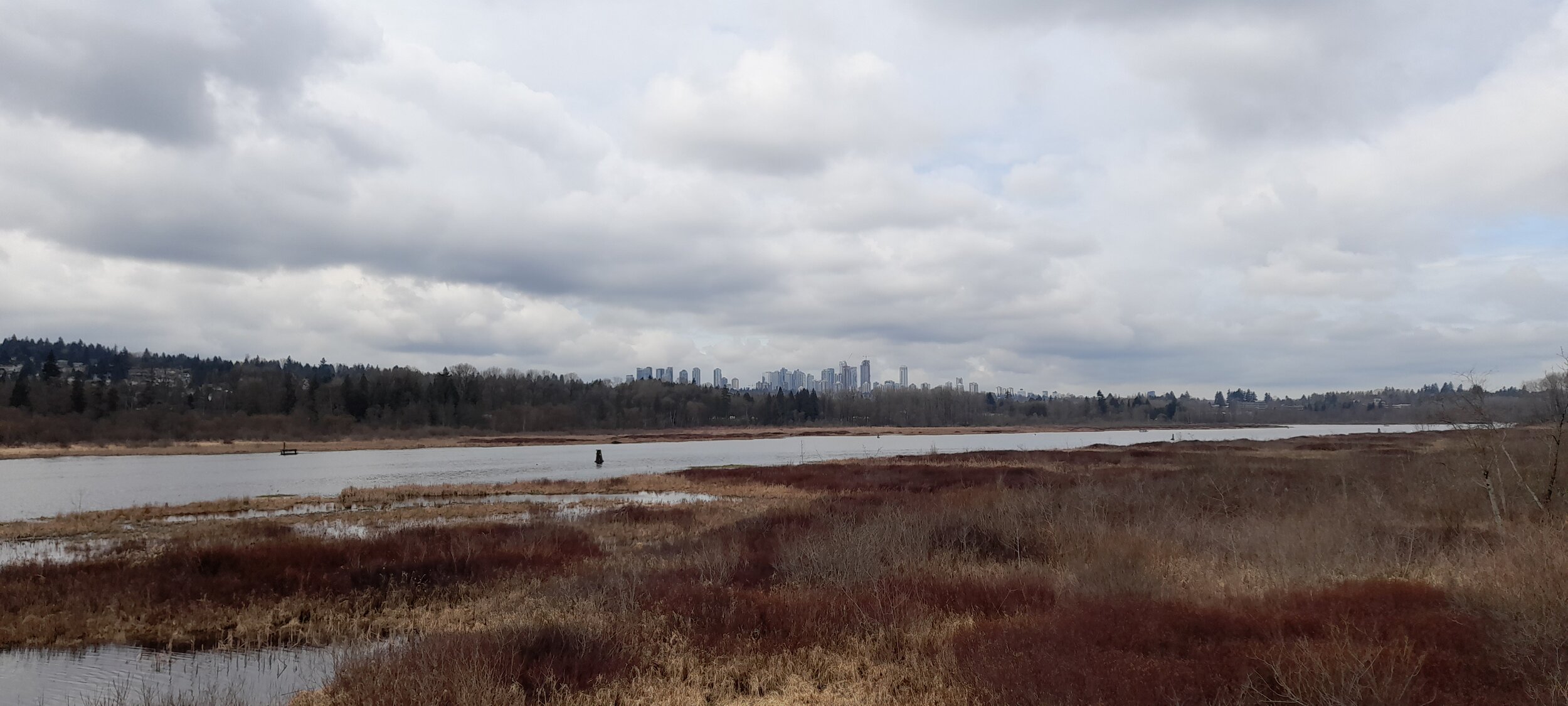
You will enjoy lush trees, blackberry bushes, and in the early spring these the flowers (see below) known as Skunk Cabbage….how interesting! Quick trivia, this wildflower grows in swampy, wet areas of forest lands. This unusual plant has a bright yellow colour and attracts pollinators (allergens alert). As for wildlife, you could see squirrels, ducks, salmon, turtles…and we also spotted a heron!

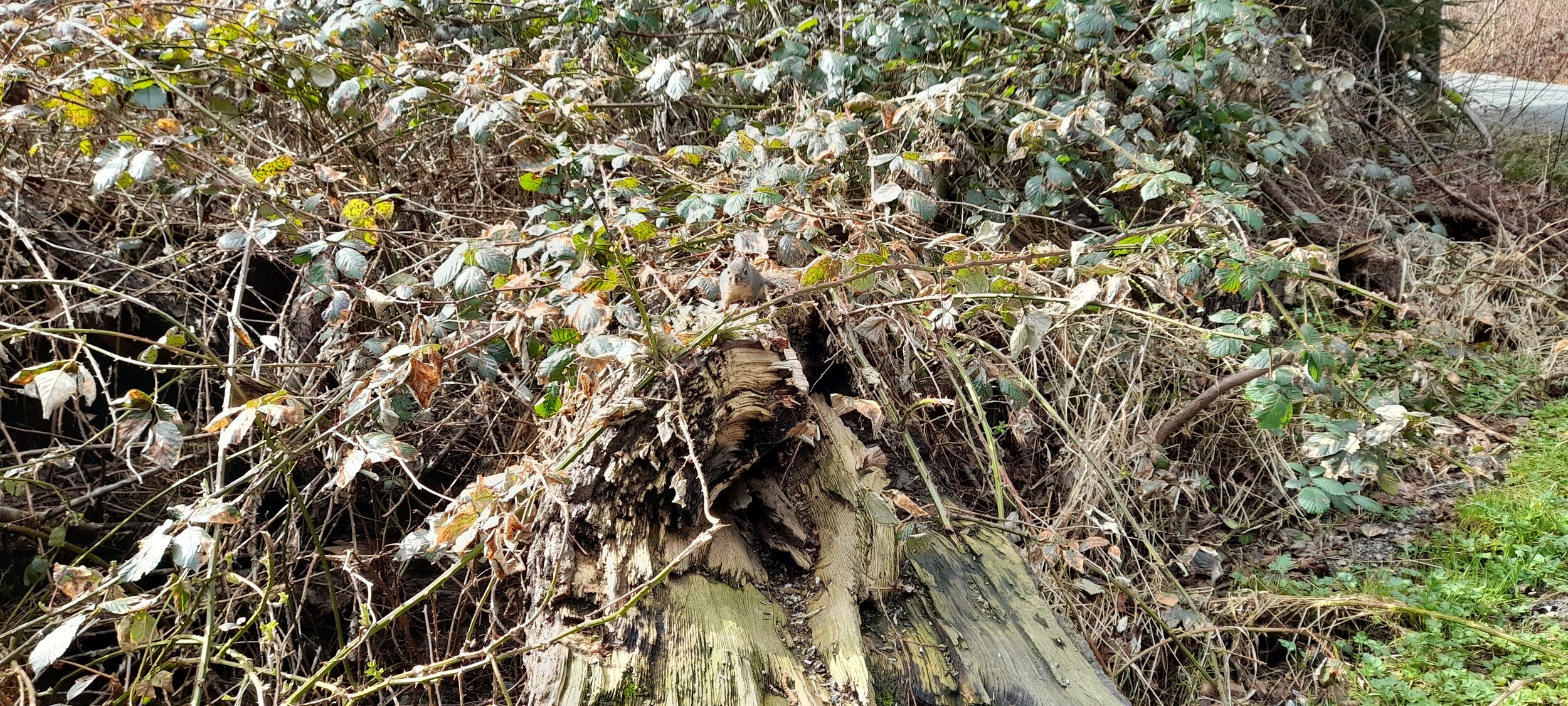
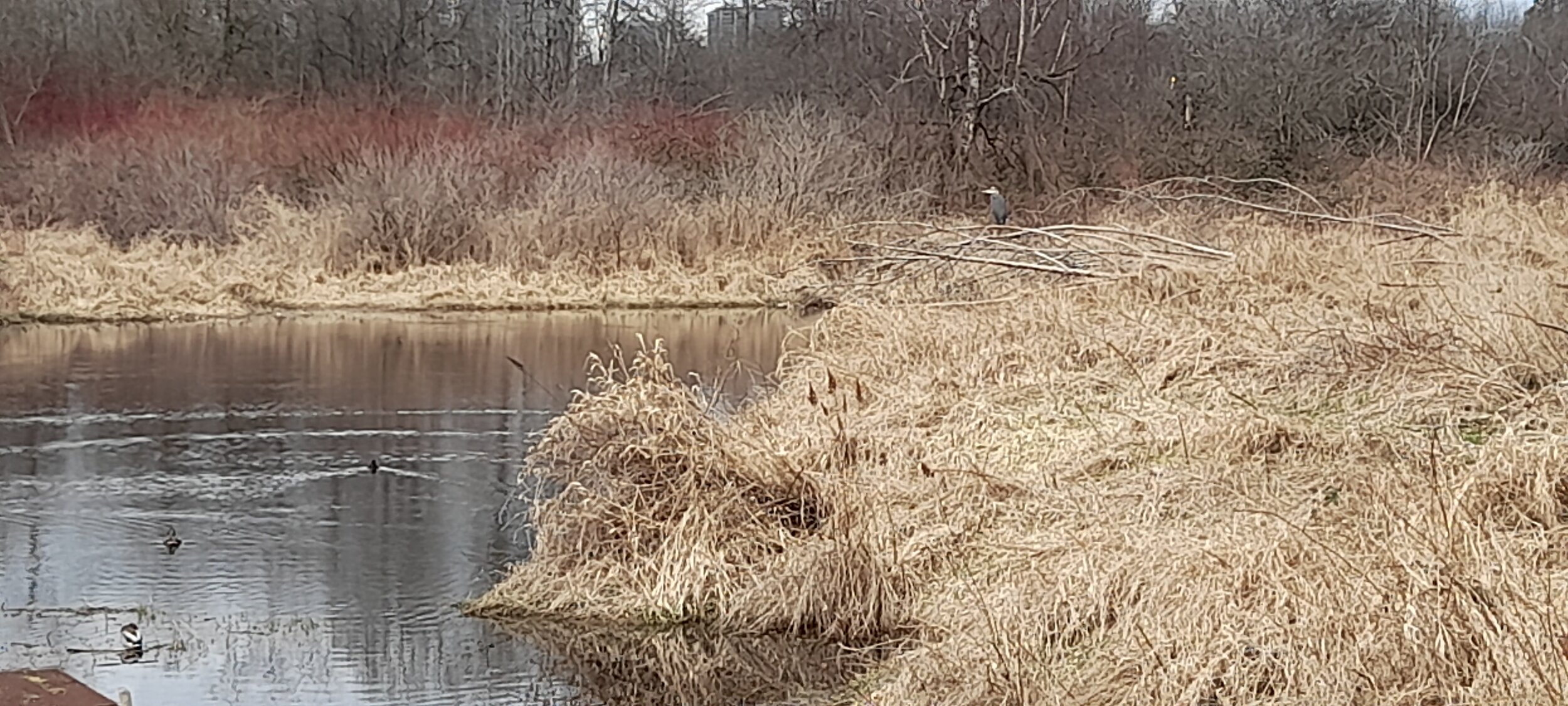
The Regional Park is not accessible for bikes although you might occasionally meet a horse from the nearby Burnaby Horsemen’s Association.
At the beginning of our walk, we passed by the sports complex. A range of activities available here. From an archery range, tennis courts, a rugby club, public pool, a playground to a rowing pavilion.
Burnaby Lake was used as a transportation route and harvesting site for thousands of years by First Nations people. The water levels of the shallow lake, we learned, naturally varied seasonally. The lake and the adjacent marshes of Still Creek expanded in size during peak rainfall periods. When you visit, you can read and learn how human intervention has affected this ecosystem through the last century. The Trans Canada Highway in the south and the factories of the industrial area with the railway along the north are some examples of how this haven has adapted, remained resilient and sustained over the years.
Hope you can experience yourself soon!
Happy Walking!
Walkable Burnaby - A fun way to explore your neighborhood
E Hastings in Burnaby is a commercial street filled with small businesses full of flavors all around the world, salons, spas, and other small shops and retailers that give the street the perfect character for being a great walking route.
Have you heard about the RapidBus? It’s a faster and more frequent bus service introduced by TransLink on select routes. And we know it can be faster than driving your car along the same route at times! Don’t just take our word for it, we checked this while planning our route.
The RapidBus has more similarities to the SkyTrain than to a regular bus. Fewer, further apart stops and with a frequency of just 6 minutes, the articulated buses aren’t just more reliable but also more comfortable as they have more room.
We hopped on to the R5 from Burrard SkyTrain station. If you leave the station by the elevator, you need to turn left (head North) and go to the start of the bus line.
While aboard the RapidBus, you can sit and admire the Downtown high-rises as you zoom through different neighborhoods of Vancouver and Burnaby. We bet before you notice, you will find yourself at Gilmore Avenue (Burnaby). In our other video route from Gilmore to Brentwood we cover the southern stretch between these two avenues. That part of the Gilmore Ave has a more industrial look-and-feel to it and you see future developments happening around the SkyTrain station. The northern stretch, is a more town-like neighborhood where buildings are not very tall.
East Hastings is a buzzing colorful street filled with local restaurants with flavors from all around the world, salons, spas, and other local retailers making it the perfect neighborhood walking route.
Although there is quite a bit of traffic, this neighborhood is a crosswalk for several bus routes, sidewalk lighting, benches, garbage cans making this one of the perfect walkable neighborhood. Walking along this street by yourself is quite entertaining and is also very comfortable to do with the whole family. Full marks for walkability!
Going north on Willingdon Avenue there is Confederation Park which is home to many recreational opportunities.
If you are unfamiliar with the Confederation Park area, you must check it out. It houses the McGill Branch of Burnaby’s Public Library, a seniors centre, a pool and fitness center, a soccer field, a lacrosse box, a new playground, an elementary school, a water park, tennis courts, a lawn bowling green, a skate park, an off-leash dog park and convenient public washrooms. The park is well endowed with tables, benches and tall trees! Talk about facilities in a neighborhood.
The Burnaby Central Railway is temporarily closed, and for our return trip we chose the bus stop in front of the North Burnaby Neighbourhood House.
You will see in our walking tour video below that the route is mostly flat and accessible. We hardly think you’d follow our route and are sure to spend a lot more time taking the beauty of this wonderful neighborhood in.
Happy Walking!
This blog post is written by BEST’s Isabel Garcia. #walkability
Neighborhood walking tour - Promising developments in Burnaby
Burnaby is a lovely, growing city witnessing so many new developments. In this walking tour, we took a short walk-hop-SkyTrain from Gilmore to Brentwood Town Center (Millennium line). So many developments coming up, so we thought of checking out the neighborhood.
Burnaby is a lovely, growing city witnessing so many new developments. In this walking tour, we took a short walk-hop-SkyTrain from Gilmore to Brentwood Town Center (Millennium line). So many developments coming up, so we thought of checking out the neighborhood. For starters, every new building is putting their piece of sidewalk and bike patch which is welcome.
Talk about creating denser cities, towers in Brentwood (50+ floors) can potentially accommodate an ‘entire village’. Planning the mobility needs for that many people can quickly get challenging, especially if everyone needs to travel in their own car. Thankfully, this neighborhood is so well connected by transit, that any travel need can be met with a quick walk-transit combo. Thanks to TransLink! And the City of Burnaby is taking steps to ensure convenient and safe connectivity - walk, roll and cycle friendly.
Apart from a hub for bulk shopping (Home Depot, Walmart etc.), the area is a hub for technology. In less than 15mins from Brentwood Town Centre SkyTrain station you could be at the BCIT campus with route 25 bus (which also connects to Burnaby Hospital). With such great connections, we recommend you leave your cars behind and explore this friendly town with a short pleasant walk.
Cycling infrastructure is quite improving in Burnaby. The city just finished 19 quick fixes last year and was quite deservingly felicitated with the #1 spot in the HUB Bike Awards for the 20-in-20 Infrastructure Challenge category. Way to go City of Burnaby! These new developments that we toured, as mentioned earlier, are making efforts to include walking, cycling ways around (needs improvement, but a great start).
The route we took is quite away from most of the noisy streets, so if you find yourself deterring walking around this neighborhood because of the noise levels - pick our route. We did the route and fully recognize that it’s not very pleasant right now because of the construction and it’s promisingly getting there, but it will serve you as a walk nonetheless without the need to drive somewhere else for it. The terrain is paved and mostly flat for a walk under 2 km. Convenient, also on a wet day (like the one we ended up picking).
Our route starts at Gilmore Skytrain station heading South. One of the first things you will notice are the train tracks crossing, which occasionally annoy with the loud noise, but kids love it. Moreover, consider watching the train from the green space in the nearby Jim Lorimer Park. The park playground has a nice set of slides too. All the more reason for that short family-time walk.
The City of Burnaby considers taking steps to help its residents get closer to nature and is investing in the Gilmore Urban Trail, part of the Central Valley Greenway.
Once out of the trail there are two options to access Willingdon Avenue: one with a flight of stairs along Still Creek Drive and the other right across which requires crossing traffic. We of course opted for the former as it is more accessible. The sidewalk is a little narrow compared to the others, but enough for a person-a-time to pass, and you’ll come up to the bridge over the train tracks now. At the end of our route, is the Brentwood Town Centre Skytrain Station. Most walking routes end up turning out to be a lot different in reverse, but this one was almost the same. There’s a park near this SkyTrain station. The reverse route has several more benches along the walkway and more green space for you to stretch your legs.
Happy walking!
This blog post is written by BEST’s Isabel Garcia. #walkability











